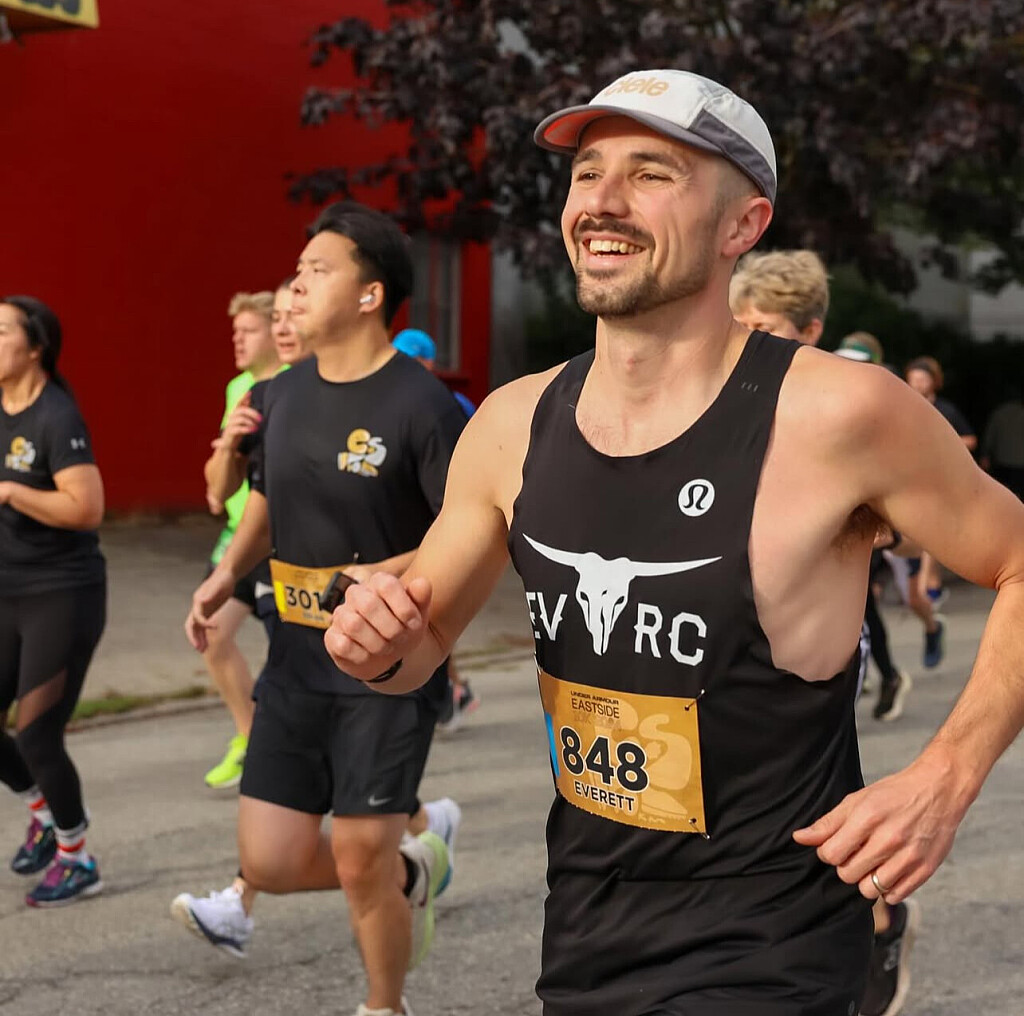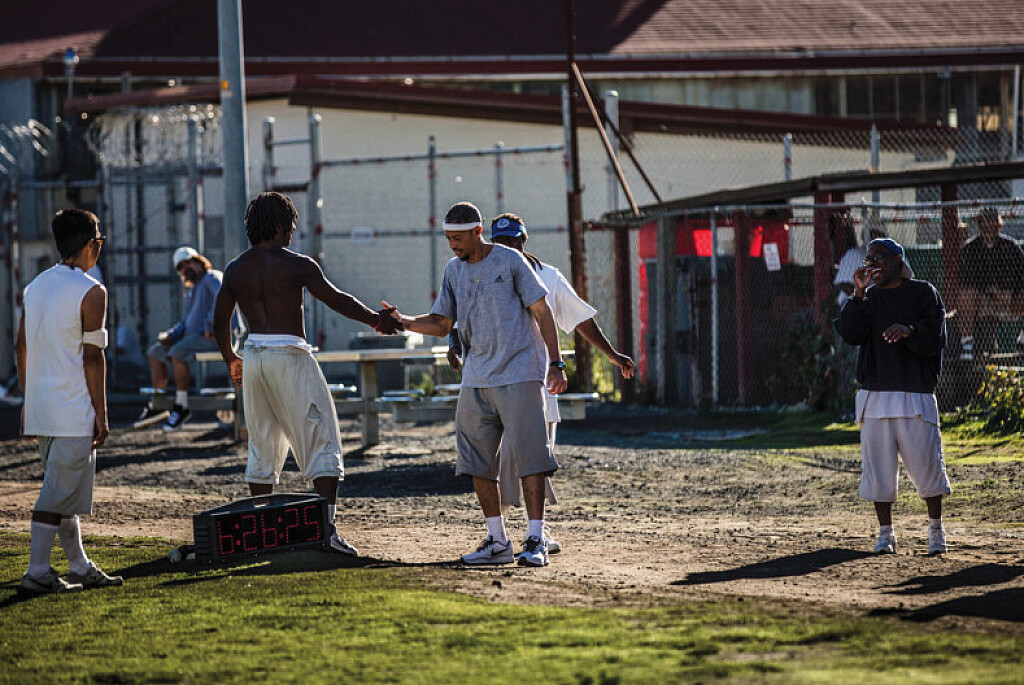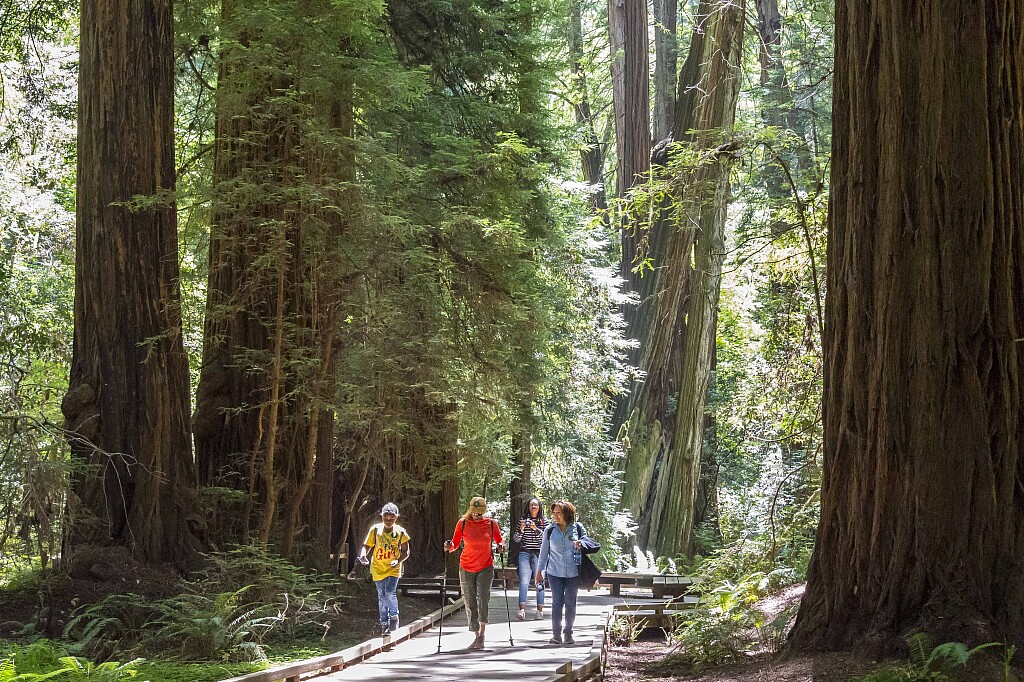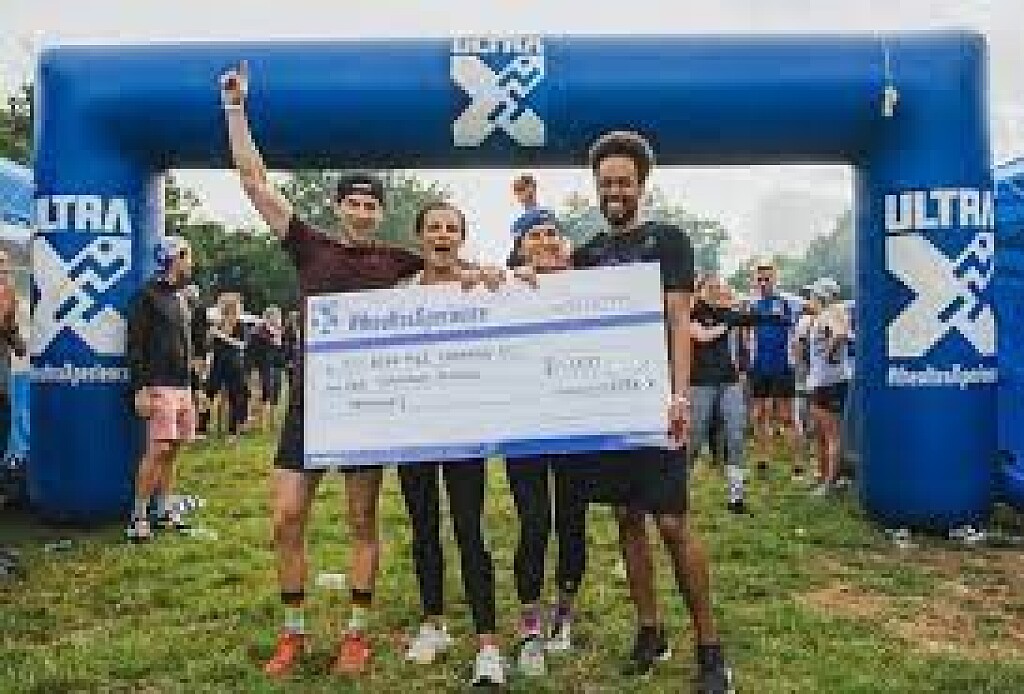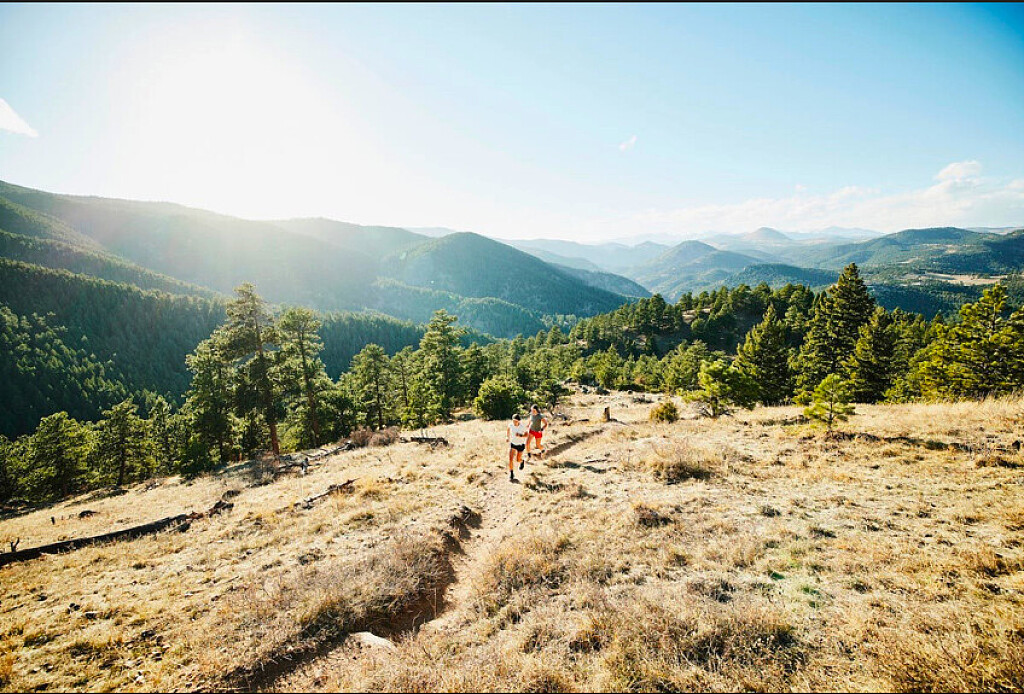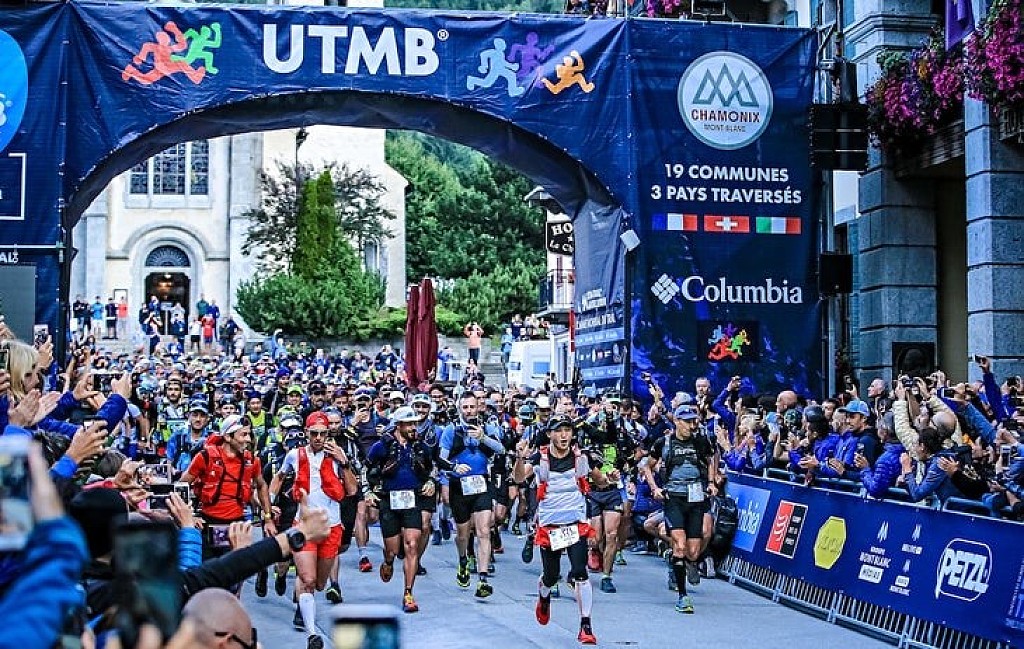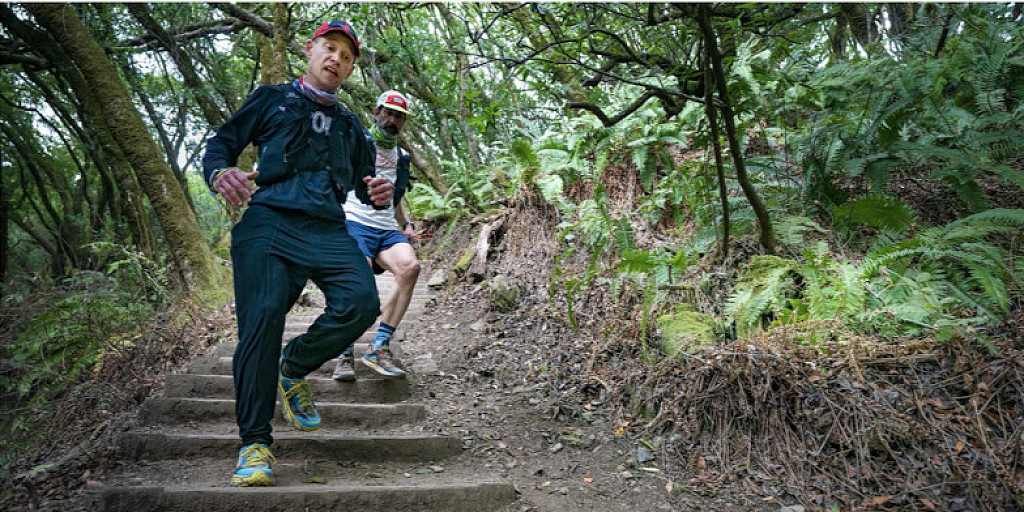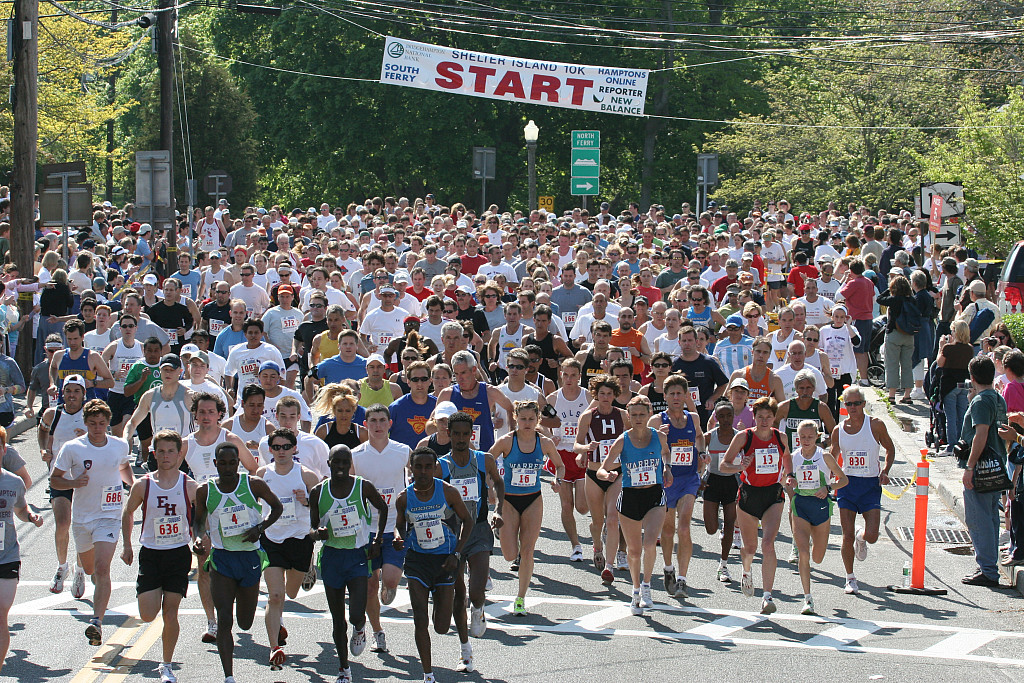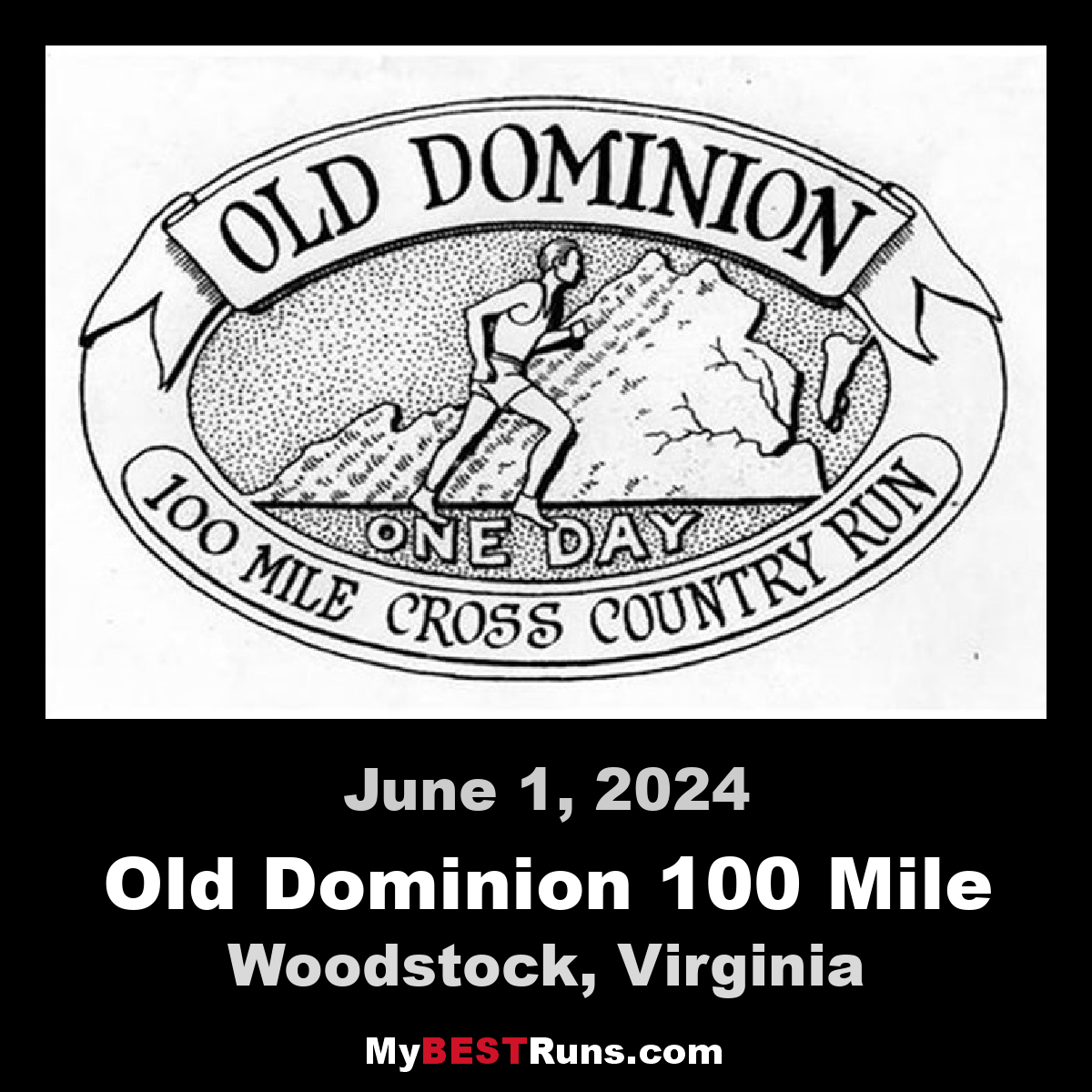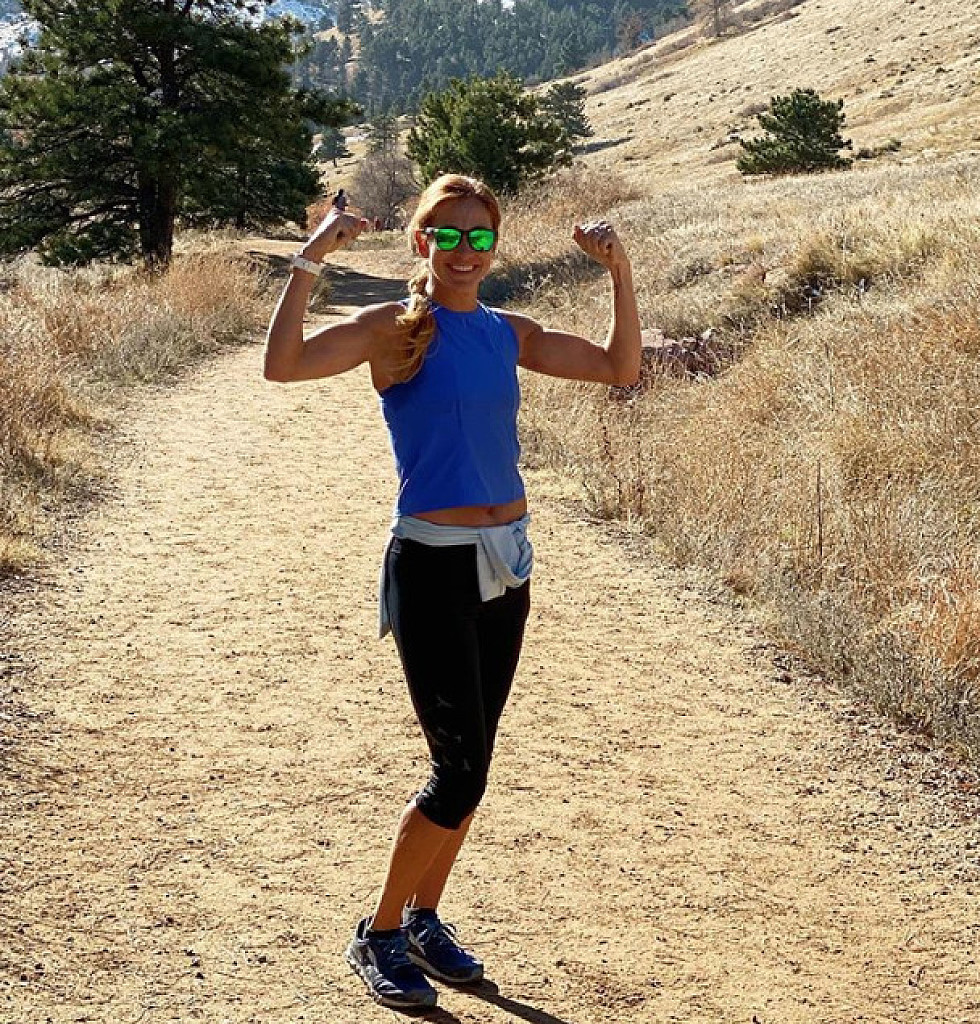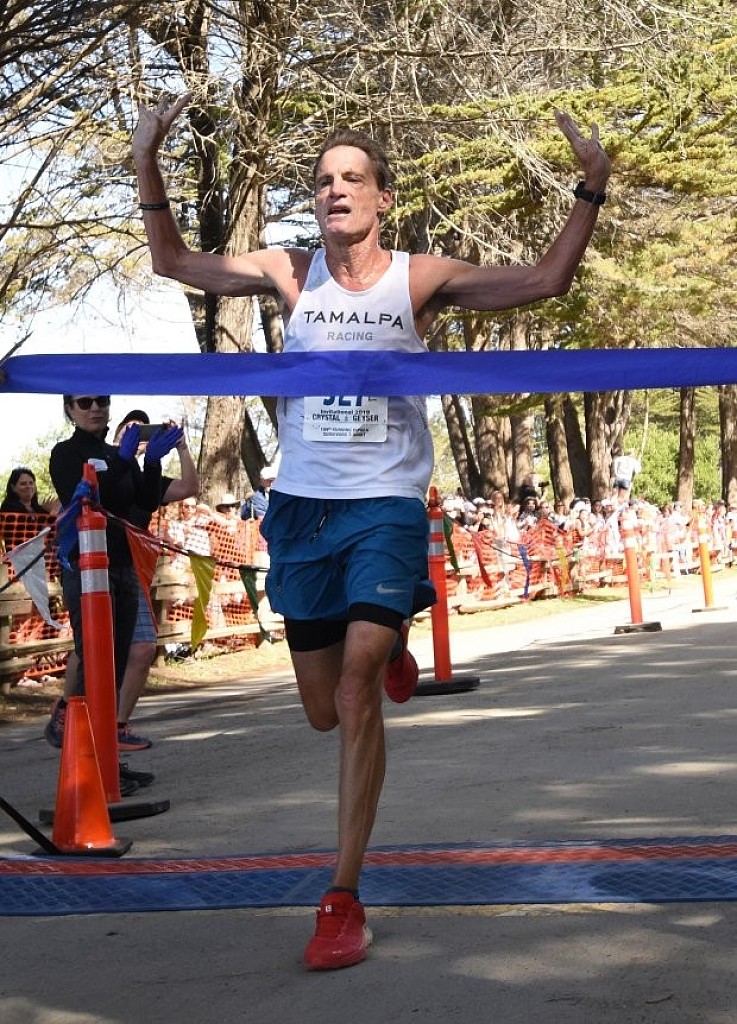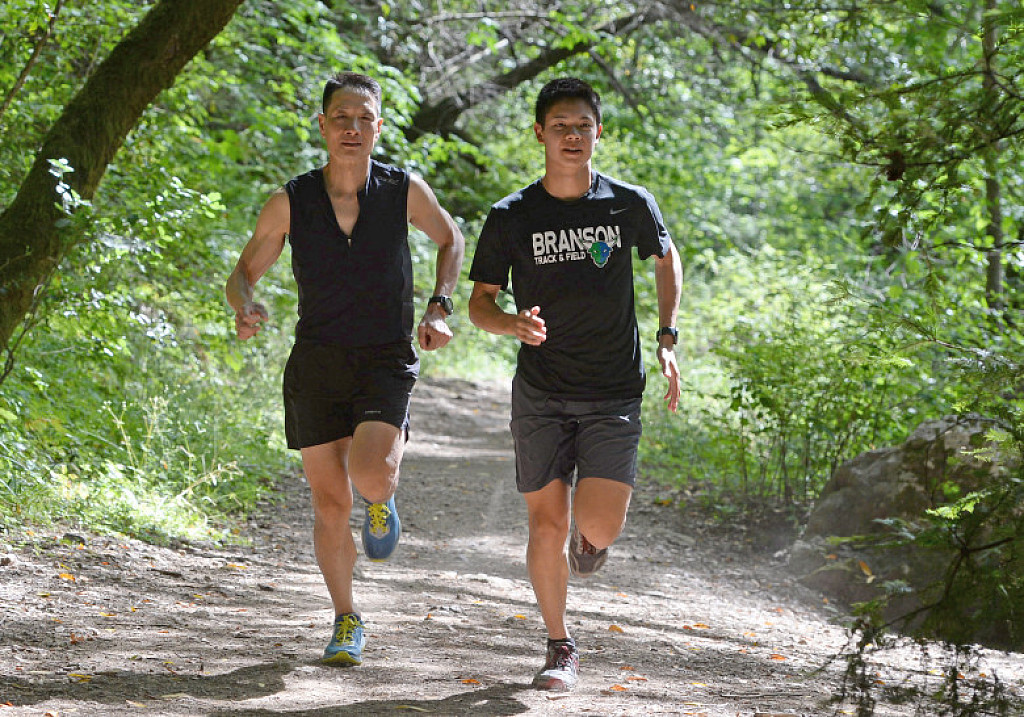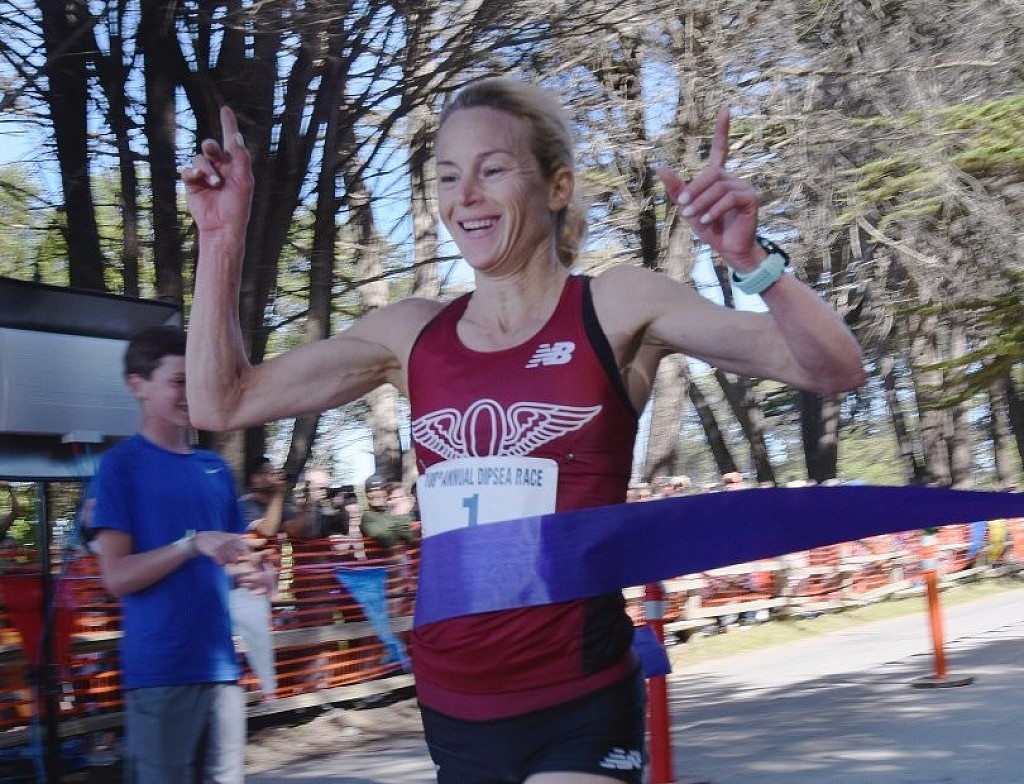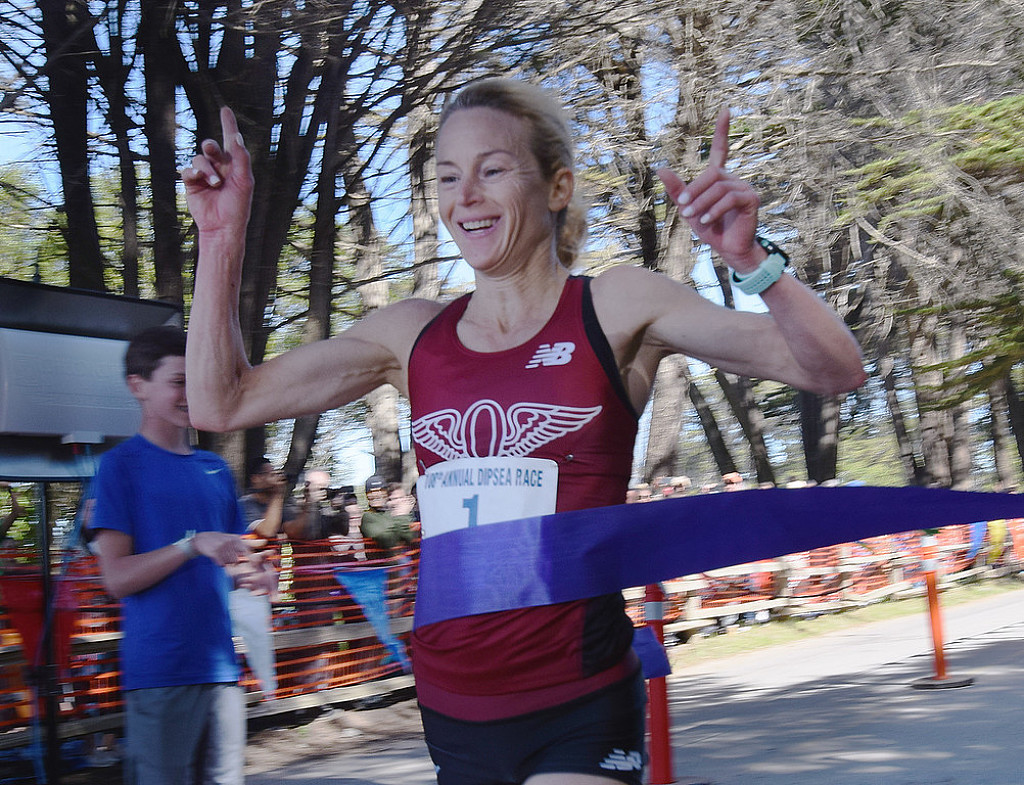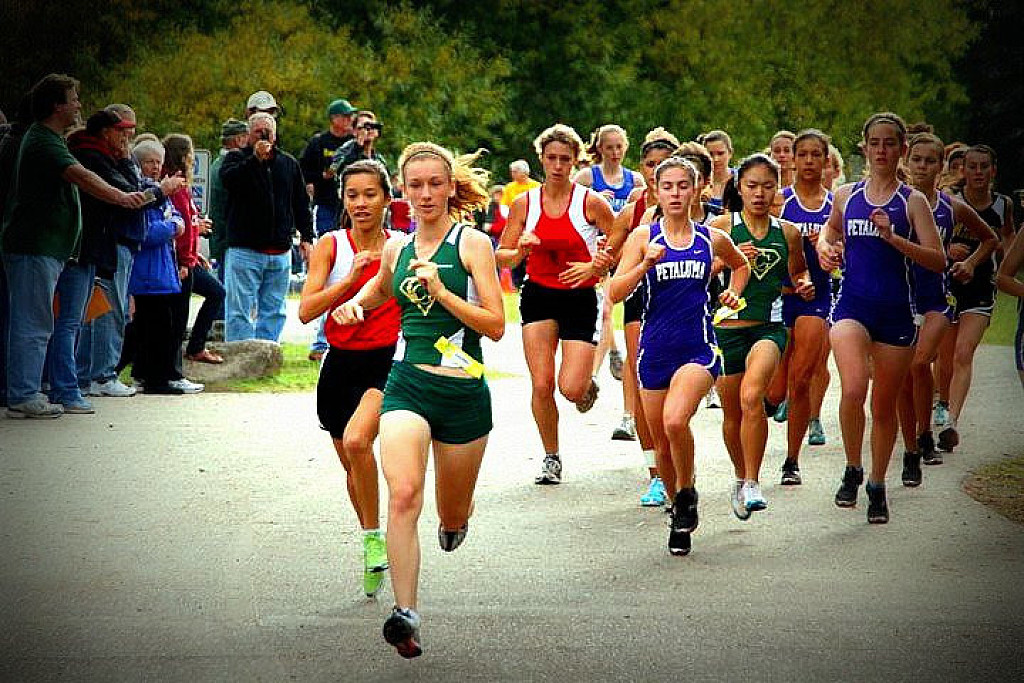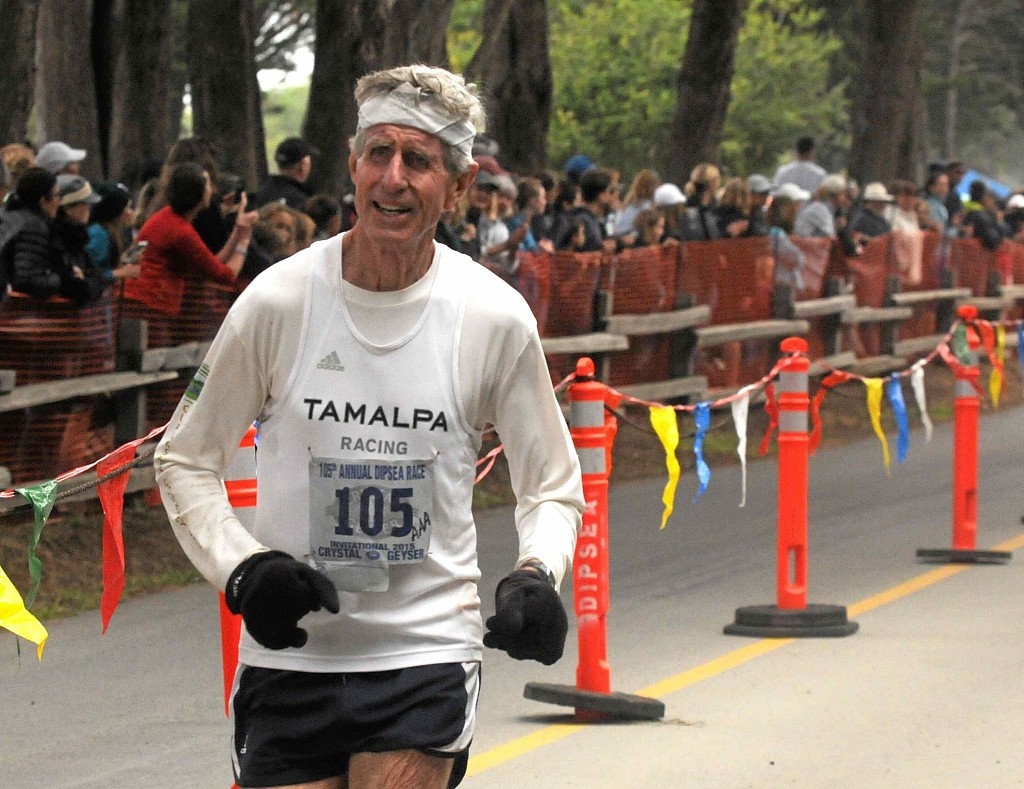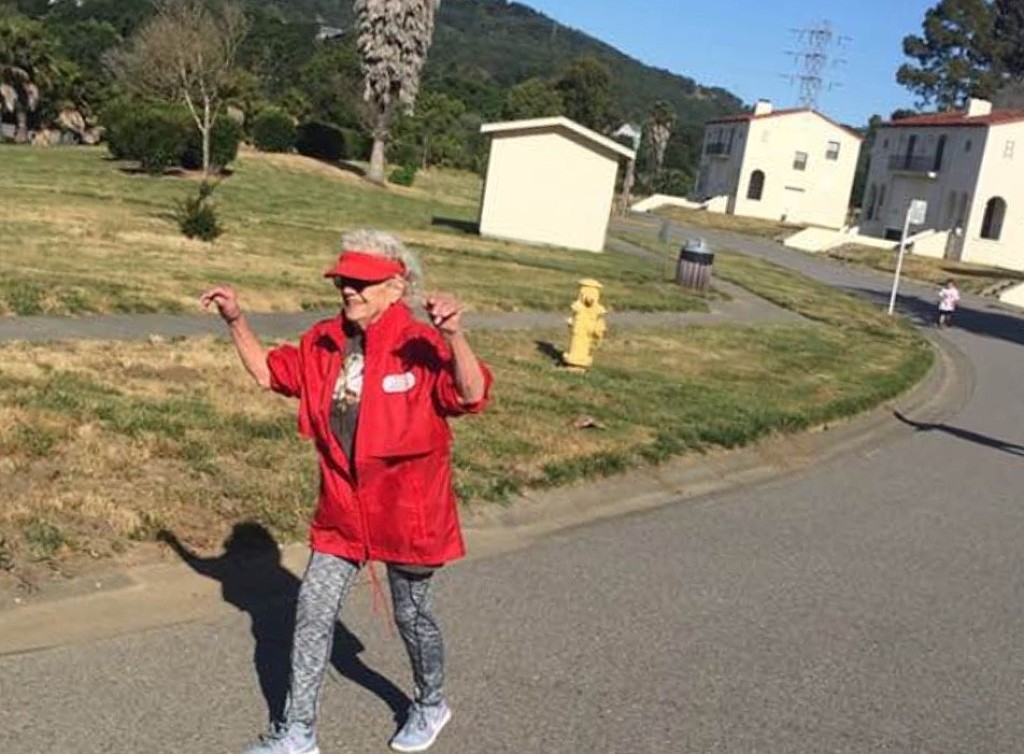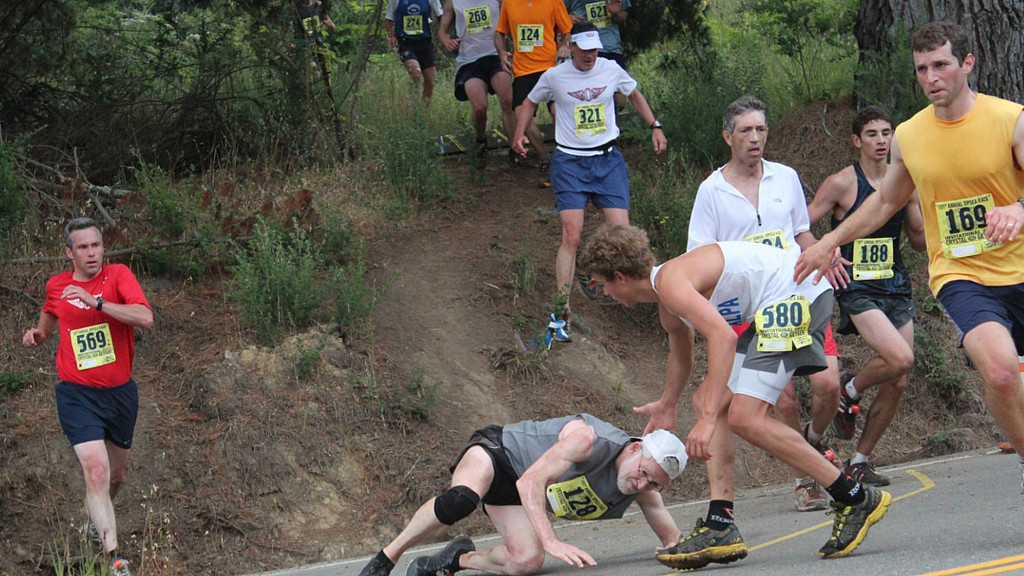Running News Daily
Running News Daily is edited by Bob Anderson. Send your news items to bob@mybestruns.com Advertising opportunities available. Train the Kenyan Way at KATA Kenya and Portugal owned and operated by Bob Anderson. Be sure to catch our movie A Long Run the movie KATA Running Camps and KATA Potato Farms - 31 now open in Kenya! https://kata.ke/
Index to Daily Posts · Sign Up For Updates · Run The World Feed
Articles tagged #Dipsea
Today's Running News
The Last Push Before Summer: How Runners Are Peaking This Spring
As the calendar turns toward May, runners across the globe are entering a crucial phase in their annual training cycles: the final opportunity to race hard and fast before summer heat shifts the strategy.
While many spring races are just wrapping up—or happening this weekend—runners are still chasing personal bests and season goals. The London Marathon, Madrid Marathon, and Big Sur International Marathon are all set for this Sunday, capping off one of the most exciting stretches of the global racing calendar.
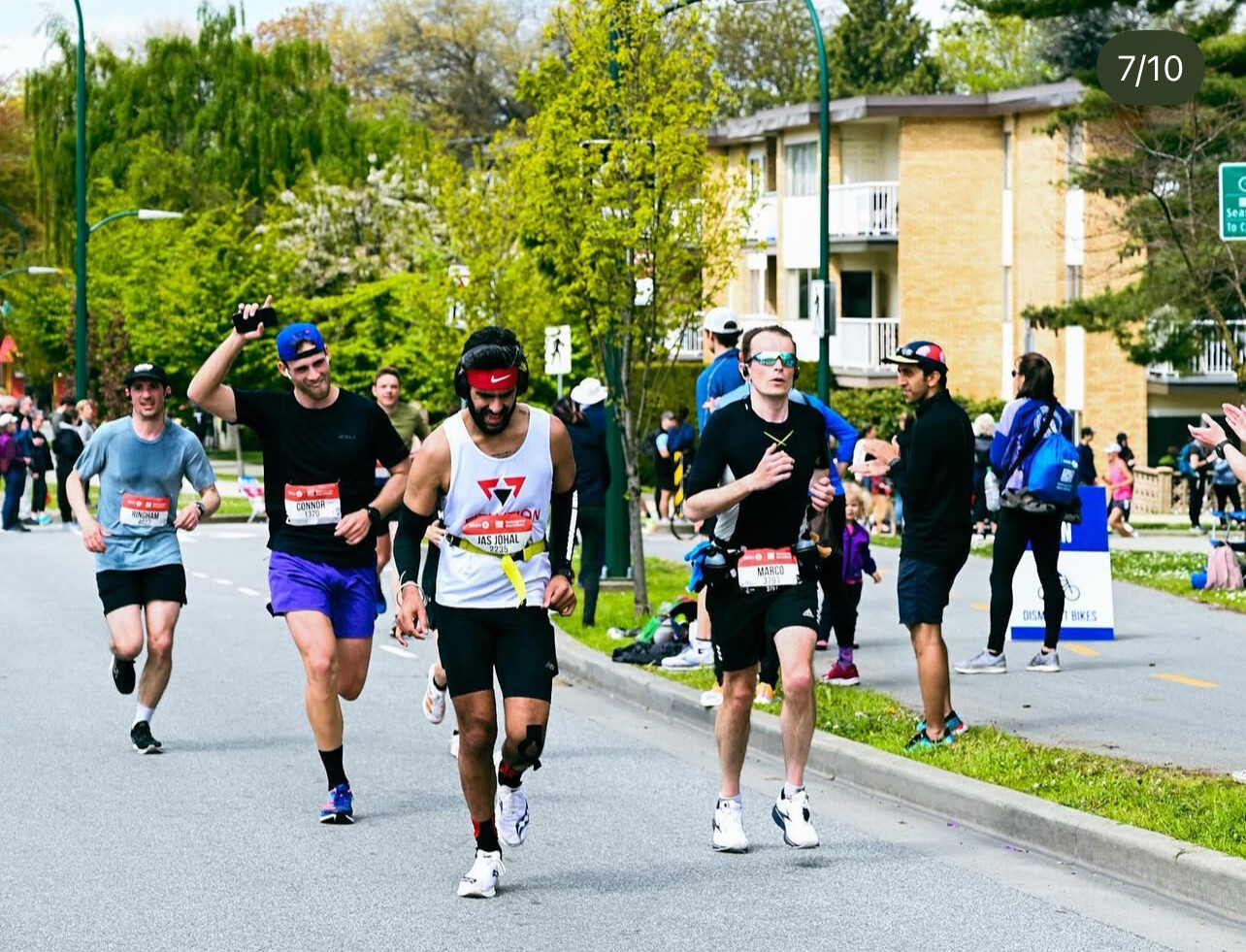
But the season isn’t quite over yet. The Eugene Marathon, Vancouver Marathon, Pittsburgh Marathon, and other early May events are giving runners one more shot to test their fitness—and many are taking full advantage.
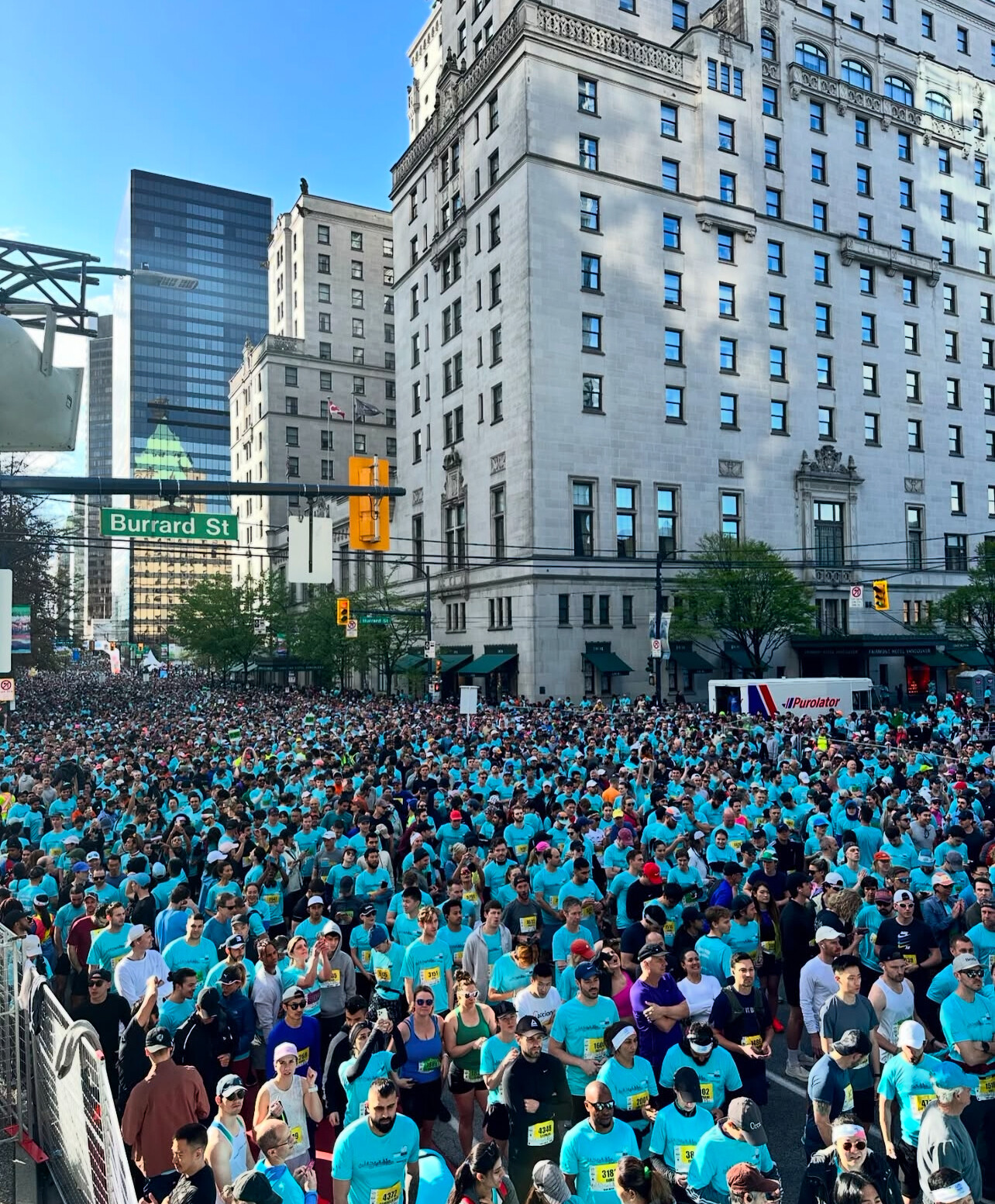
A Critical Window for Speed and Strategy
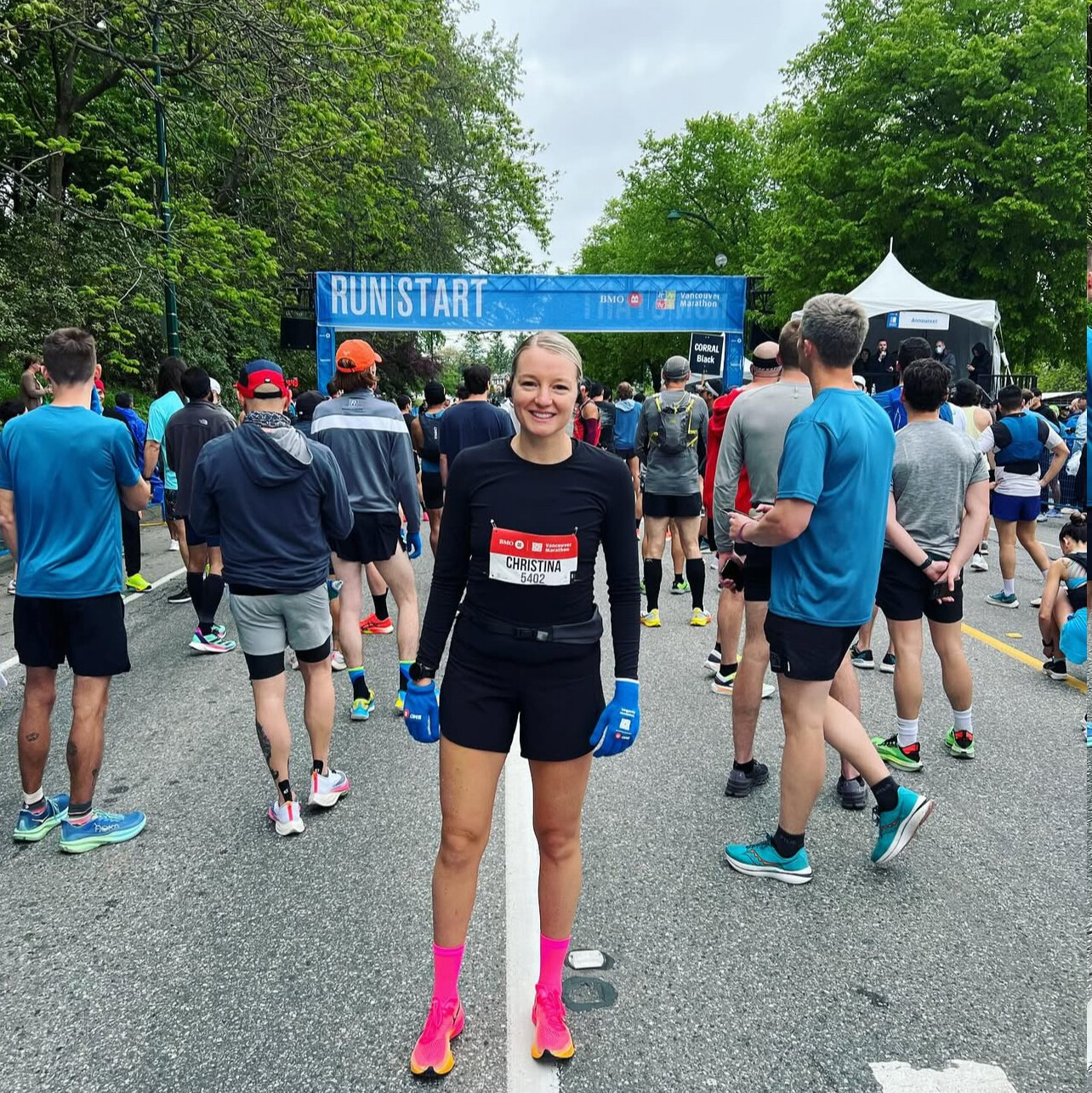
“This is one of the best times of year to be fit,” says Coach Dennis from KATA Portugal. “Runners who stayed healthy through the winter and peaked for April races are now sharper than ever. If you can handle one more race effort, this is the time to go for it.”
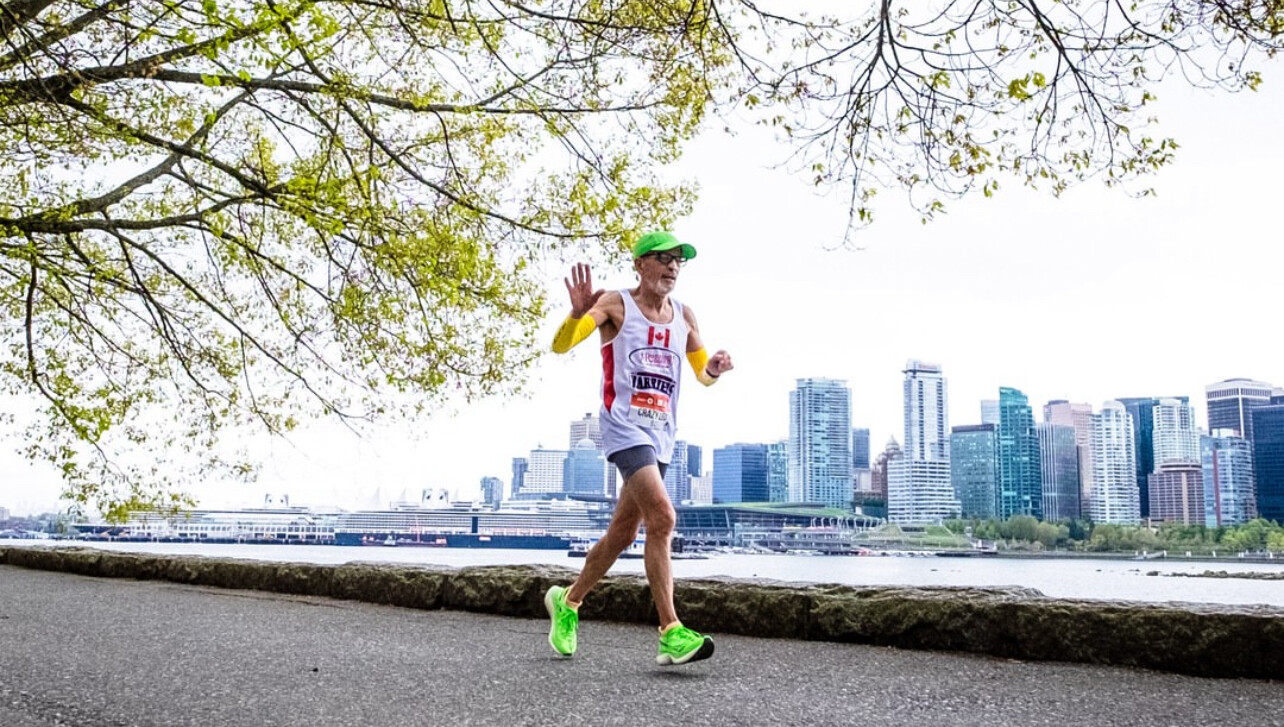
Late April and early May offer ideal racing weather in much of the Northern Hemisphere. Cool mornings and calm conditions are perfect for PRs, BQ attempts, or one last tune-up before switching into base-building mode.
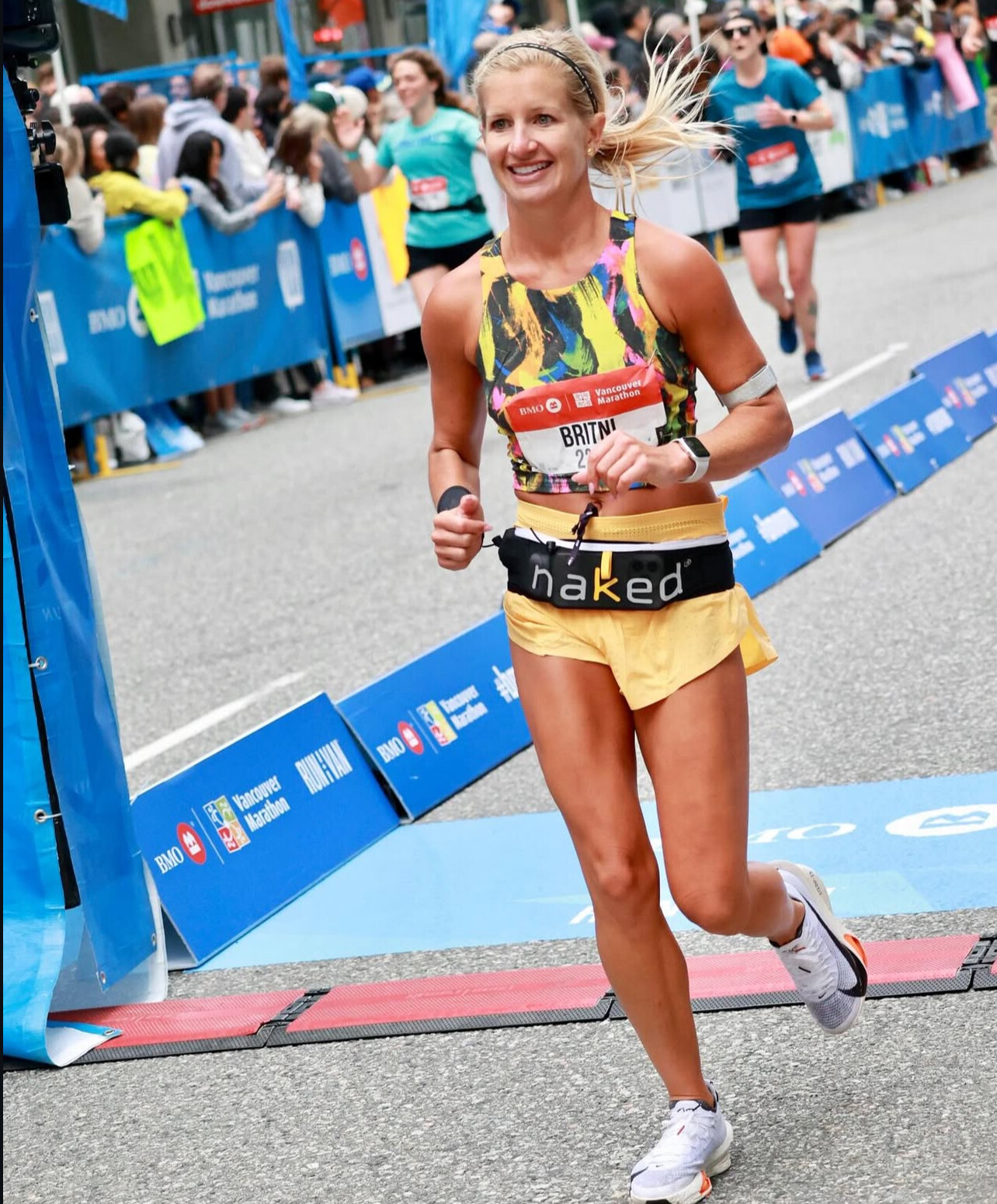
The Spring Surge Continues
The Eugene Marathon (April 27) and BMO Vancouver Marathon (May 4) are both known for fast, scenic courses and well-organized race weekends. They attract everyone from local club runners to elites trying to salvage a qualifying time or simply end the spring on a high note.
“My goal race is Berlin this fall, but Eugene gives me a mid-year checkpoint,” says California-based runner Mallory James. “If I’m not racing now, I’m falling behind.”
Time to Recover—or to Launch
Some runners will use May for recovery after a hard season. Others—especially those gearing up for summer trail and mountain races—are just now hitting their peak mileage. Events like the Dipsea, Mt. Washington Road Race, and Western States 100 are fast approaching.
Coach’s Tip: Plan Your Summer Wisely
According to KATA coach and 2:07 marathoner Jimmy Muindi, spring is where momentum is built—but summer is where runners evolve. “If you raced well this spring, great. Now shift the focus to long-term strength. Summer is for building, not burning out.”
Whether you’re racing this weekend or logging miles toward your fall marathon, this is your moment to finish strong—and set the tone for everything that comes next. As the calendar turns toward May, runners across the globe are entering a crucial phase in their annual training cycles: the final opportunity to race hard and fast before summer heat shifts the strategy.
by Boris Baron
Login to leave a comment
TWENTY-ONE YEARS AGO, HE WAS INCARCERATED FOR LIFE. LAST YEAR, HE RAN THE NYC MARATHON A RADICALLY CHANGED MAN.
RAHSAAN ROUNDED THOMAS A CORNER. Gravel underfoot gave way to pavement, then dirt. Another left turn, and then another. In the distance, beyond the 30-foot wall and barbed wire separating him from the world outside, he could see the 2,500-foot peak of Mount Tamalpais. He completed the 400-meter loop another 11 times for an easy three miles.
Rahsaan wasn’t the only runner circling the Yard that evening in the fall of 2017. Some 30 people had joined San Quentin State Prison’s 1,000 Mile Club by the time Rahsaan arrived at the prison four years prior, and the group had only grown since. Starting in January each year, the club held weekly workouts and monthly races in the Yard, culminating with the San Quentin Marathon—105 laps—in November. The 2017 running would be Rahsaan’s first go at the 26.2 distance.
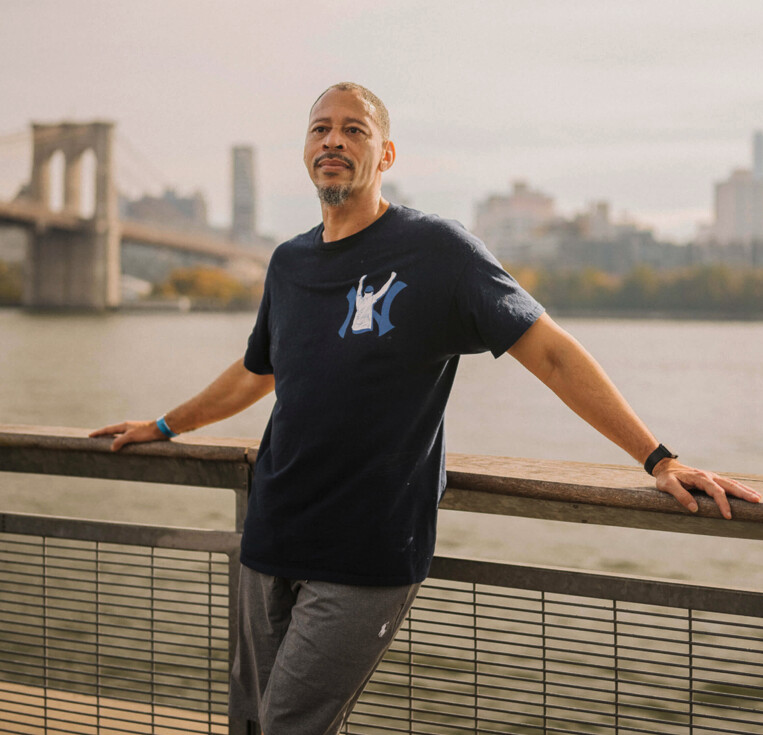
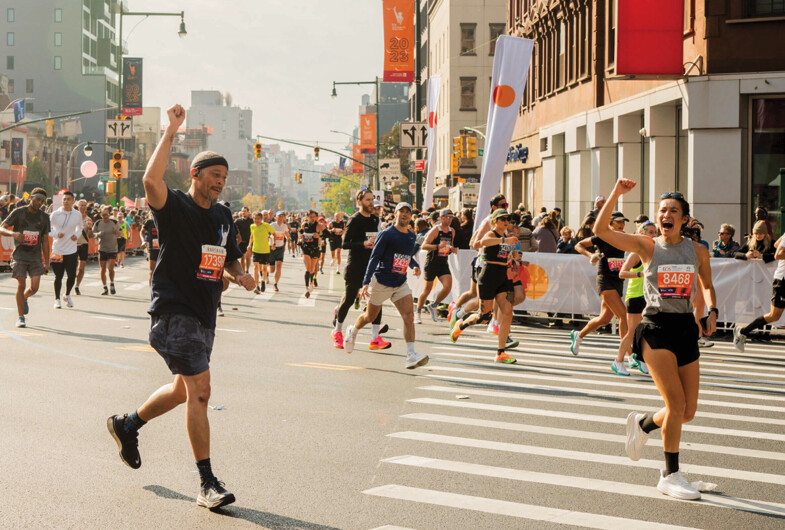
For Rahsaan and the other San Quentin runners, Mount Tam, as it’s known, had become a beacon of hope. It’s the site of the legendary Dipsea, a 7.4-mile technical trail from Mill Valley to Stinson Beach. After the 1,000 Mile Club was founded in 2005, it became tradition for club members who got released to run that trail; their stories soon became lore among the runners still inside. “I’ve been hearing about the Dipsea for the longest,” Rahsaan says.
Given his sentence, he never expected to run it. Rahsaan was serving 55 years to life for second-degree murder. Life outside, let alone running over Mount Tam all the way to the Pacific, felt like a million miles away. But Rahsaan loved to run—it gave him a sense of freedom within the prison walls, and more than that, it connected him to the community of the 1,000 Mile Club. So if the volunteer coaches and other runners wanted to talk about the Dipsea, he was happy to listen.
We’ll get to the details of Rahsaan’s crime later, but it’s useful to lead with some enduring truths: People can grow in even the harshest environments, and running, whether around a lake or a prison yard, has the power to change lives. In fact, Rahsaan made a lot of changes after he went to prison: He became a mentor to at-risk youth, began facing the reality of his violence, and discovered the power of education and his own pen. Along the way, Rahsaan also prayed for clemency. The odds were never in his favor.
To be clear, this is not a story about a wrongful conviction. Rahsaan took the life of another human being, and he’s spent more than two decades reckoning with that fact. He doesn’t expect forgiveness. Rather, it’s a story about a man who you could argue was set up to fail, and for more than 30 years that’s exactly what he did. But it’s also a story of navigating the delta between memory and fact and finding peace in the idea that sometimes the most formative things in our lives may not be exactly as they seem. And mostly, it’s a story of transformation—of learning to do good in a world that too often encourages the opposite.
RAHSAAN “NEW YORK” THOMAS GREW UP IN BROWNSVILLE, A ONE-SQUARE-MILE SECTION OF EASTERN Brooklyn wedged between Crown Heights and East New York. As a kid he’d spend hours on his Commodore 64 computer trying to code his own games. He loved riding his skateboard down the slope of his building’s courtyard. On weekends, he and his friends liked to play roller hockey there, using tree branches for sticks and a crushed soda can for a puck.
Once a working-class Jewish enclave, Brownsville started to change in the 1960s, when many white families relocated to the suburbs, Black families moved in, and city agencies began denying residents basic services like trash pickup and streetlight repairs. John Lindsay, New York’s mayor at the time, once referred to the area as “Bombsville” on account of all the burned-out buildings and rubble-filled empty lots. By 1971, the year after Rahsaan was born, four out of five families in Brownsville were on government assistance. More than 50 years later, Brownsville still has a poverty rate close to 30 percent. The neighborhood’s credo, “Never ran, never will,” is typically interpreted as a vow of resilience in the face of adversity. For some, like Rahsaan, it has always meant something else: Don’t back down.
The first time Rahsaan didn’t run, he was 5 or 6 years old. He had just moved into Atlantic Towers, a pair of 24-story buildings beset with rotting walls and exposed sewer pipes that housed more than 700 families. Three older kids welcomed him with their fists. Even if Rahsaan had tried to run, he wouldn’t have gotten far. At that age, Rahsaan was skinny, slow, and uncoordinated. He got picked on a lot. Worse, he was light-skinned and frequently taunted as “white boy.” The insult didn’t even make sense to Rahsaan, whose mother is Black and whose father was Puerto Rican. “I feel Black,” he says. “I don’t feel [like] anything else. I feel like myself.”
Rahsaan hated being called white. It was the mid-1970s; Roots had just aired on ABC, and Rahsaan associated being white with putting people in chains. Five-Percent Nation, a Black nationalist movement founded in Harlem, had risen to prominence and ascribed godlike status to Black men. Plus, all the best athletes were Black: Muhammad Ali. Reggie Jackson. Kareem Abdul-Jabbar. In Rahsaan’s world, somebody white was considered physically inferior.
Raised by his mother, Jacqueline, Rahsaan never really knew his father, Carlos, who spent much of Rahsaan’s childhood in prison. In 1974, Jacqueline had another son, Aikeem, with a different man, and raised her two boys as a single mom. Carlos also had another son, Carl, whom Rahsaan met only once, when Carl was a baby. Still, Rahsaan believed “the myth,” as he puts it now, that one day Carlos would return and relieve him, his mom, and Aikeem of the life they were living. Jacqueline had a bachelor’s degree in sociology and worked three jobs to keep her sons clothed and fed. She nurtured Rahsaan’s interest in computers and sent him to a parochial school that had a gifted program. Rahsaan describes his family as “upper-class poor.” They had more than a lot of families, but never enough to get out of Brownsville, away from the drugs and the violence.
Some traumas are small but are compounded by frequency and volume; others are isolated occurrences but so significant that they define a person for a lifetime. Rahsaan remembers his grandmother telling him that his father had been found dead in an alley, throat slashed, wallet missing. Rahsaan was 12 at the time, and he understood it to mean his father had been murdered for whatever cash he had on him—maybe $200, not even. Now he would never come home.
Rahsaan felt like something he didn’t even have had been taken from him. “It just made me different, like, angry,” he says. By the time he got to high school, Rahsaan resolved to never let anyone take anything from him or his family again. “I started feeling like, next time somebody tryin’ to rob me, I’m gonna stab him,” he says. He started carrying a knife, a razor, rug cutters—“all kinds of sharp stuff.” Rahsaan never instigated a fight, but he refused to back down when threatened or attacked. It was a matter of survival.
The first time Rahsaan picked up a gun, it was to avenge his brother. Aikeem, who was 14 at the time, had been shot in the leg by a guy in the neighborhood who was trying to rob him and Rahsaan. A few months later, Rahsaan saw the shooter on the street, ran to the apartment of a drug dealer he knew, and demanded a gun. Rahsaan, then 18, went back outside and fired three shots at the guy. Rahsaan was arrested and sent to Rikers Island, then released after three days: The guy he’d shot was wanted for several crimes and refused to testify against Rahsaan.
By day, Rahsaan tried to lead a straight life. He graduated from high school in 1988 and got a job taking reservations for Pan Am Airways. He lost the job after Flight 103 exploded in a terrorist bombing over Scotland that December, and the company downsized. Rahsaan got a new job in the mailroom at Debevoise & Plimpton, a white-shoe law firm in midtown Manhattan. He could type 70 words a minute and hoped to become a paralegal one day.
Rahsaan carried a gun to work because he’d been conditioned to expect the worst when he returned to Brownsville at night. “If you constantly being traumatized, you constantly feeling unsafe, it’s really hard to be in a good mind space and be a good person,” he says. “I mean, you have to be extraordinary.”
After high school, some of Rahsaan’s friends went to Old Westbury, a state university on Long Island with a rolling green campus. He would sometimes visit them, and at a Halloween party one night, he got into a scrape with some other guys and fired his gun. Rahsaan spent the next year awaiting trial in county jail, the following year at Cayuga State Prison in upstate New York, and another 22 months after that on work release, living in a halfway house in Queens. He got a job working the merch table for the Blue Man Group at Astor Place Theater, but the pay wasn’t enough to support the two kids he’d had not long after getting out of Cayuga.
He started selling a little crack around 1994, when he was 24. By 27 he was dealing full-time. He didn’t want to be a drug dealer, though. “I just felt desperate,” he says. Rahsaan had learned to cut hair in Cayuga, and he hoped to save enough money to open a barbershop.
He never got that opportunity. By the summer of 1999, things in New York had gotten too hot for Rahsaan and he fled to California. For the first time in his 28 years, Rahsaan Thomas was on the run.
EVERY RUNNER HAS AN ORIGIN STORY. SOME START IN SCHOOL, OTHERS TAKE UP RUNNING TO IMPROVE their health or beat addiction. Many stories share common themes, if not exact details. And some, like Rahsaan’s, are absolutely singular.
Rahsaan drove west with ambitions to break into the music business. He wanted to be a manager, maybe start his own label. His new girlfriend would join him a week later in La Jolla, where they’d found an apartment, so Rahsaan went first to Big Bear, a small town deep in the San Bernardino Mountains 100 miles east of Los Angeles. It’s where Ryan Hall grew up, and where he discovered running at age 13 by circling Big Bear Lake—15 miles—one afternoon on a whim. Hall has recounted that story so many times that it’s likely even better known than the American records he would go on to set in the half and full marathons.
Rahsaan didn’t know anything about Ryan Hall, who at the time was just about to start his junior year at Big Bear High School and begin a two-year reign as the California state cross-country champion. He didn’t even know there was a lake in Big Bear. Rahsaan went to Big Bear to box with a friend, Shannon Briggs, a two-time World Boxing Organization heavyweight champion.
Briggs and Rahsaan had grown up together in Atlantic Towers. As kids they liked to ride bikes in the courtyard, and later they went to the same high school in Fort Greene. But Briggs’s mom had become addicted to drugs by his sophomore year, and they were evicted from the Towers. Briggs and Rahsaan lost touch. Briggs began spending time at a boxing gym in East New York; often he’d sleep there. He had talent in the ring. People thought he might even be the next Mike Tyson, another native of Brownsville who was himself a world heavyweight champ from 1986 to 1989.
Briggs went pro in 1991, and by the end of that decade he was earning seven figures fighting guys like George Foreman and Lennox Lewis. Rahsaan was at those fights. The two had reconnected in 1996, when Rahsaan was trying to rebuild his life after prison and Briggs’s boxing career was on the rise. In August 1999, Briggs was gearing up to fight Francois Botha, a South African known as the White Buffalo, and had decamped to Big Bear to train. “He was like, ‘Yo, come live with me, bro,’” Rahsaan recalls.
Briggs was running three miles a day to increase his stamina. His route was a simple out-and-back on a wooded trail, and on one of Rahsaan’s first days there, he decided to join him. Rahsaan hadn’t done so much as a push-up since getting out of prison, but he wanted to hang with his friend. Briggs and his training partners set off at their usual clip; within a few minutes they’d disappeared from Rahsaan’s view. By the time they were doubling back, he’d barely made it a half mile.
Rahsaan never liked feeling physically inferior. So back in La Jolla, he started running a few times a week, going to the gym, whatever it took. Before long he was up to five miles. And the next time he ran with Briggs, he could keep up. After that, he says, “Running just became my thing.”
FOR YEARS, RAHSAAN HAD BUCKED AT TAKING RESPONSIBILITY for the murder that sent him to prison. The other guys had guns, too, he insisted. If he hadn’t shot them, they’d have shot him. It was self-defense.
In the moment, he had no reason to think otherwise. It was April 2000. A friend had arranged to sell $50,000 worth of weed, and Rahsaan went along to help. They met in the parking lot of a strip mall in L.A., broad daylight. The buyers brought guns instead of cash, things went sideways, and, in a flash of adrenaline, Rahsaan used the 9mm he’d packed for protection, killing one man and putting the other in critical condition. He was 29 and had been in California eight months.
After awaiting trial for three years in the L.A. County jails, Rahsaan was sentenced to 55 years to life. But for the crushing finality of it, the grim interminability, the prospect of never seeing the outside world again, he was on familiar ground. Even Brownsville had been a kind of prison—one defined, as Rahsaan puts it now, by division and neglect, a world unto itself that societal forces made nearly impossible to escape. He was used to life inside.
Rahsaan spent the next 10 years shuttling between maximum security facilities, the bulk of those years at Calipatria State Prison, 30 miles from the Mexican border. By the time he got to San Quentin, he was 42.
As part of the prison’s restorative justice program, Rahsaan met a mother of two young men who’d been shot, one killed and the other critically injured. Her pain, her dignity, her ability to forgive her sons’ shooters prompted Rahsann to reflect on his own crime. “It made me feel like, damn, I did this to his mother,” he says. “I did this to my mother. You don’t do that to Black mothers. They go through so much.”
ABOUT 2 MILLION PEOPLE ARE INCARCERATED IN THE UNITED States today, roughly eight times as many as in the early 1970s. Nearly half of them are Black, despite Black Americans representing only 13 percent of the U.S. population.
This disparity reflects what the legal scholar and author Michelle Alexander calls “the new Jim Crow,” an invisible system of oppression that has impeded Black men in particular since the days of slavery. In her book of the same title, Alexander unpacks 400 years of policies and social attitudes that have created a society in which one in three Black males will be incarcerated at some point in their lives, and where even those who have been paroled often face a lifetime of discrimination and disenfranchisement, like losing the right to vote. If you hit a wall every time you try to do something, are you really free? More than half of the people released from U.S. jails and prisons return within three years.
After Rahsaan got out of Cayuga back in 1992, with a felony on his permanent record, he’d had trouble doing just about anything legit: renting an apartment, finding a decent job, securing a loan. Though he’d paid for the Mercedes SUV he drove to California, the lease was in his girlfriend’s name. Selling crack had provided financial solvency, and his success in New York made him feel invincible. One weed deal in California seemed easy enough. But he wasn’t naive. Rahsaan packed a gun, and if he felt he had to use it, he would.
Today Rahsaan feels deep remorse for what transpired from there. But back then he saw no other way. “When we have a grievance, we hold court in the street,” he says of growing up in the Brownsville projects. “There’s no court of law, there’s no lawsuits.” Even while incarcerated, Rahsaan continued to meet threats with violence. But he also found that in prison, as in Brownsville, respect was temporary. “If you stab somebody, people leave you alone,” he says. “But you gotta keep doing it.”
Not long after Rahsaan got to Calipatria, around 2003 or 2004, an older man named Samir pulled him aside. “Youngster, there’s nobody that you can beat up that’s gonna get you out of prison,” Rahsaan remembers Samir saying. “In fact, that’s gonna make it worse.” Rahsaan thought about Muhammad Ali, how he would get his opponents angry on purpose so they’d swing until they wore themselves out. He realized that when you’re angry, you’re not thinking clearly or moving effectively. You’re not responding; you’re reacting.
The next time Rahsaan saw Samir was in the yard at Calipatria. They were both doing laps, and the two men started to run together. Rahsaan told Samir about the impact his words had on him, how they helped him see he’d always let “somebody else’s hangup become my hangup, somebody else’s trauma become my trauma.” Each time that happened, he realized, he slid backward.
Rahsaan began exploring various religions. He liked how the men in the Muslim prayer group at Calipatria encouraged him to think about his past, and the way they talked about God’s plan. He thought back to that day in April 2000 and came to believe that God would have gotten him out of that situation without a gun. “If I was meant to die, I was meant to die,” he says. “If I’m not, I’m not.” He started to see confrontations as tests. “I stopped feeding into the negativity and started passing the test, and I’ve been passing it consistently since,” he says.
CLAIRE GELBART PLACED HER BELONGINGS IN A PLASTIC TRAY AND WALKED THROUGH THE METAL detectors at the visitors’ entrance at San Quentin. She crossed the Yard to the prison’s newsroom. It was late fall of 2017, and Gelbart had started volunteering with the San Quentin Journalism Guild, an initiative to teach incarcerated people the fundamentals of newswriting and interviewing techniques.
Historically infamous for housing people like Charles Manson and Sirhan Sirhan, the man convicted of killing Robert Kennedy, and for having the only death row for men in California, San Quentin has in recent years instituted reforms. By the time Rahsaan arrived, the facility was offering dozens of programs, had an onsite college, and granted some of the individuals housed there considerable freedom of movement. Hundreds of volunteers pass through its gates every year.
Rahsaan was in the newsroom working on a story for the San Quentin News, where he was a staff writer. Gelbart and Rahsaan started to chat, and within minutes they were bonding over running. They talked about the San Quentin Marathon—in which Rahsaan was proud to have placed 13th out of 13 finishers in 6 hours, 12 minutes, and 23 seconds—and Gelbart’s plans to run her first half marathon that spring. “It was like I lost all sense of place and time,” Gelbart says, “like I could have been in a coffee shop in San Francisco talking to someone.”
In weekly visits over the next year, Gelbart and Rahsaan talked about their families, their hopes for the future. Gelbart had just graduated from Tufts University with dreams of being a writer. Rahsaan was working toward a college degree, writing for numerous outlets like the Marshall Project and Vice, and learning about podcasting and documentary filmmaking. In 2019, when Gelbart was offered a job in New York, she told Rahsaan she felt torn about leaving—they’d become close friends. They made a pact that if Rahsaan ever got out of prison, they would run the New York City Marathon together. “We couldn’t think of a better thing to celebrate him coming home,” Gelbart says.
When Rahsaan was sentenced, he still had hope for a successful appeal. But when his appeal was denied in 2011, he realized he was never going home. His parole date was set for 2085.
At the time, though, the political appetite for mass incarceration was starting to shift. Gray Davis, who was governor of California from 1999 to 2003, had never granted a single pardon; and his successor, Arnold Schwarzenegger, granted only 15. Then, between 2011 and 2019, Governor Jerry Brown pardoned or commuted the sentences of more than 1,300 people. Studies show that the recidivism rate among those who had been serving life sentences is less than 5 percent in a number of states, including California. And according to the U.S. Bureau of Justice, 98 percent of people convicted of homicide who are released from prison do not commit another murder.
In the fall of 2018, Governor Brown approved Rahsaan for commutation, but it was now up to his successor, Gavin Newsom, to follow through. And until a release date was set, there were no guarantees.
Back at San Quentin, Rahsaan was busier than ever. He was working on his fourth film, Friendly Signs, a documentary funded by the Marshall Project and the Sundance Institute; it was about fellow 1,000 Mile Club member Tommy Lee Wickerd’s efforts to start an ASL program to aid a group of deaf and hard-of-hearing newcomers to the prison. He had recently been named chair of the San Quentin satellite chapter of the Society of Professional Journalists and became a cohost and coproducer of Ear Hustle, a popular podcast about life in San Quentin that in 2020 was a finalist for a Pulitzer Prize. He was also sketching out plans for a nonprofit, Empowerment Ave, to build connections to the outside world for other incarcerated writers and artists and to advocate for fair compensation. And after five years, he was just one history class away from getting his associate’s degree from Mount Tamalpais College.
In January 2020, Rahsaan began his final semester, eager to don his cap and gown that June. MTC always organized a festive graduation ceremony in the prison’s visiting room, inviting families, friends, students, and staff. Then COVID-19 hit. Lockdown. All classes canceled until further notice. The 1,000 Mile Club suspended workouts and races as well, its 70-plus members scattering throughout the prison, not sure when or if they’d ever get together again. Covid would officially kill 28 people at San Quentin and make many more very ill. College graduation, let alone races in the Yard and parole hearings, would have to wait.
For the first time since arriving at San Quentin, Rahsaan felt claustrophobic in his 4-by-10-foot cell. He couldn’t work on his films or go to the newsroom. All he could do was read and write, alone. After George Floyd was murdered that May, Rahsaan fell into a depression. He remembered something Chadwick Boseman had said in a 2018 commencement speech at Howard University: “Remember, the struggles along the way shape you for your purpose.”
Rahsaan decided his purpose was to write. Outside journalists couldn’t enter the prison during the pandemic, but their publications were thirsty for prison Covid stories. Rahsaan saw an opportunity. Between June 2020 and February 2023, he published 42 articles, and thanks to Empowerment Ave, he knew what those articles were worth. As a writer for the San Quentin News, Rahsaan earned $36 a month; those 42 articles for external publications netted him $30,000.
DOZENS OF PEOPLE GATHERED OUTSIDE SAN QUENTIN’S GATES. IT WAS A FRIGID MORNING IN EARLY February 2023; the sun hadn’t yet risen. Among those assembled were two cofounders of Ear Hustle, Earlonne Woods and Nigel Poor, along with executive producer Bruce Wallace, recording equipment in hand. A procession of white vans, each carrying one or two men, arrived one by one. After three or four hours, the air had warmed to a balmy 60 degrees. Another van pulled up, Rahsaan got out, and the crowd erupted. Nearly 23 years after he’d been sentenced to 55 years to life, Rahsaan Thomas had been released.
Rahsaan got into a Hyundai sedan and was soon headed away from San Quentin. Wallace sat in the back, recording Rahsaan seeing water, mountains, and a highway from the front seat of a car for the first time in decades. “I feel like I’m escaping,” he joked. “Is anybody chasing us? This is amazing. This is crazy.”
Rahsaan called his mom, who wasn’t able to make it to California for his release.
“Hey, Ma, it’s really real,” he said, breathless with joy. “I’m free. No more handcuffs.”
Jacqueline’s exuberance can be heard in her laughter, her curiosity about what his first meal would be (steak and French toast), and her motherly rebuke of his plan to buy a Tesla.
“You ain’t been drivin’ in a while and I know you ain’t the best driver in the world,” she teased.
Rahsaan moved into a transitional house in Oakland and wasted no time adjusting to life in the 21st century. He got an iPhone, and a friend gave him a crash course in protecting himself from cyberattacks. He’s almost fallen for a few. “There’s some rough hoods on the internet,” he jokes. Earlonne Woods, who was paroled in 2018, and others taught Rahsaan how to use social media. He opened Instagram and Facebook accounts and worked on his own website, rahsaannewyorkthomas.com, which a friend had built for him while he was in San Quentin to promote his creative projects, Empowerment Ave, and even a line of merch.
Despite all the excitement and chaos, Rahsaan never forgot about the pact he’d made with Claire Gelbart. He found her on Facebook and sent a simple, two-line message: “Start training. We have a marathon to run.”
IN LATE MARCH, SIX WEEKS AFTER HIS RELEASE, RAHSAAN FLEW TO NEW YORK CITY. IT WAS THE FIRST time he’d been home in nearly a quarter century, and he hadn’t flown since before 9/11. The security protocols at SFO reminded him more of prison than of the last time he’d been in an airport. Actually, “it was worse than prison,” he jokes. They confiscated his jar of honey.
The changes to his home borough were no less surprising. He’d come to New York to take work meetings, see family, and catch a Nets game at Barclays Center in downtown Brooklyn. Rahsaan barely recognized Barclays; it had been a U-Haul lot the last time he was there, and skyscrapers now towered over Fulton Mall, where he used to buy Starter jackets at Dr. Jay’s and Big Daddy Kane tapes at the Wiz.
He met up with Gelbart on Flatbush Avenue, where come November they’d be just hitting mile 8 of the New York City Marathon. They hadn’t been allowed to touch at San Quentin and weren’t sure how to greet each other on the outside. “It was weird at first, because I was like, do we hug?” Gelbart recalls. But the awkwardness faded fast, and as they walked, Gelbart saw a different side of Rahsaan. “He seemed so much more relaxed,” she says. “Much happier, much lighter.”
Back in 1985, just a few blocks from where Rahsaan and Gelbart walked now, Rahsaan, his brother Aikeem, and his friend Troy had been on their way home from the Fulton Mall when out of nowhere, about a dozen guys rolled up on them. They started beating on Troy and, for a minute, left Rahsaan and Aikeem alone. Images of his father, throat slashed, flashed through Rahsaan’s mind. He pulled a rug cutter out of his pocket, ran to the smallest guy in the group, and jabbed it into the back of his head. “They looked at me like they were gonna kill me,” Rahsaan says. He threw the blade to the ground, slid his hand inside his coat, and held it there. “Y’all wanna play? We gonna play,” he said. The bluff worked; the guys ran. It was the first time Rahsaan had ever stabbed someone.
Change sometimes occurs gradually, and then all at once. That was a different Brooklyn, a different Rahsaan. He began to confront his own violence when he had met Samir some 20 years before, and continued to do so through his studies, his faith, his work in restorative justice, and his own writing. But the origin of his tendency toward violence, the death of his father, remained firmly rooted in his psyche. Then, in 2017, Rahsaan spoke for the first time with his estranged half-brother, Carl.
Carl had read Rahsaan’s work, and asked why he always said their father had been murdered.
“That’s what grandma told me,” Rahsaan said.
“But he wasn’t murdered,” Carl told him. “He killed himself.”
And it wasn’t in 1982, as Rahsaan remembered, but in 1985—the same year Rahsaan started carrying blades.
Rahsaan didn’t believe it until Carl sent him a copy of the suicide note. Even then he remained in shock. “To think I justified violence, treating robbery like a life-or-death situation, over a lie,” he says. Jacqueline was as surprised as Rahsaan to learn the truth of Carlos’s death. He never seemed troubled or depressed to her when they were together, but, “You can’t really read people,” she says. “You don’t know.”
Rahsaan still can’t account for why his grandmother told him what she did, nor for the discrepancy between his memory and the facts. Regardless, after more than 30 years, Rahsaan was finally able to let go of the one trauma that had calcified into an instinct to kill or be killed. And he has no intention of dredging it back up.
THE FASTEST RUNNER IN THE 1,000 MILE CLUB’S HISTORY IS MARKELLE “THE GAZELLE” TAYLOR, WHO was paroled in 2019 and went on to run 2:52 in the 2022 Boston Marathon. Rahsaan is the slowest. At San Quentin, he was often the last one to finish a race, but that wasn’t the point—he liked being out in the Yard with the guys. It gave him a sense of belonging, and not just to the 1,000 Mile Club, but to the running community beyond.
Like every other 1,000 Miler who gets released from San Quentin, Rahsaan had a rite of passage to conquer. On Sunday morning, May 7, 2023, he met a handful of other runners from the club and a few volunteer coaches in Mill Valley. After a decade of gazing up at Mount Tam from the Yard as he completed one 400-meter loop after another, Rahsaan was finally about to run over the mountain all the way to the Pacific.
The runners did a few final stretches, wished one another luck, and started to run. Almost immediately they had to climb some 700 stairs, many made of stone, and the course only got more treacherous from there. Uneven footing, singletrack paths, and 2,000-plus feet of elevation all conspire to make the Dipsea notoriously difficult. The giant redwoods and Douglas firs along the course were lost on Rahsaan; he never took his eyes off the ground.
One of the coaches, Jim Maloney, stayed with Rahsaan as his guide, and to help him if he slipped or fell. Markelle Taylor came too, but said he’d meet them in Stinson Beach. He knew how dangerous the trail was, Rahsaan says, and had vowed to never run it again. After his own initiation, Rahsaan decided that he, too, would never do it again. “I’ve been shot at,” he says. “I’ve been in physical danger. I don’t want to revisit danger.”
Rahsaan now logs most of his miles on a treadmill because of knee issues, but on occasion he ventures out to do the 3.4-mile loop around Lake Merritt, a lagoon in the heart of Oakland. He decided to use the New York City Marathon to raise money for Empowerment Ave, and to accept donations until he crossed the finish line in Central Park. Gelbart wrote a training plan for him and got him a new pair of shoes. In prison, Rahsaan had run in the same pair of Adidas for three years, and he was excited to learn about the maximalist shoe movement. Gelbart tried to interest him in Hokas, but Rahsaan thought they were ugly. He wanted Nikes.
In June, Gelbart went to the Bay Area to visit family and met Rahsaan for a six-mile run around Lake Merritt. As they looped the lake at a conversational 11:30 pace, they talked about work, relationships, and, of course, the New York City Marathon. Rahsaan was disappointed to learn that he would probably not be the last person to finish. (He still holds the record for the slowest San Quentin Marathon in its 15-year history, and he hopes no one ever beats it.) Besides, the more time he spent on the course in New York, he figured, the longer people would have to donate to Empowerment Ave.
On Sunday, November 5, Gelbart and Rahsaan made their way to Staten Island. Waiting at the base of the Verrazzano Bridge, Gelbart recorded Rahsaan singing along to Frank Sinatra’s “New York, New York” for Instagram, and captioned the video “back where he belongs.” They documented much of their race as they floated through Brooklyn, Queens, Manhattan, and the Bronx: greeting friends along the course, enjoying a lollipop on the Queensboro Bridge, beaming even as their pace slowed from 11:45 per mile for the first 5K to 16:30 for the last. Rahsaan finished in six hours, 26 minutes, and 21 seconds, placing 48,221 out of 51,290 runners. The next day, he sent me a text: “The marathon was pure love.” What’s more, he received more than $15,000 in donations for Empowerment Ave, enough to start a writing program at a women’s prison in Texas.
Every runner has an origin story. Every runner finds a reason to keep going. At Calipatria, Rahsaan liked to joke that he ran because if an earthquake ever came along and brought down the prison’s walls, he needed to be in shape so he could escape and run to Mexico. In San Quentin, he ran for the community. Today he has a new reason. “I heard that running extends your life by 10 years,” he says, “and I gave away 22.” Now that he’s out, his motivation has never been higher. He has so much to do.
Login to leave a comment
Unleash Your Inner Runner on These Five Amazing California Trails
California boasts some of the most stunning trails in the world. The correct jogging trail can make all the difference in your training, whether you are a seasoned pro or a novice. The topic of staying active and sports, in general, has never been more prominent at present, especially with the sun shining and the new NFL campaign right around the corner.
Numerous well-known online bookmakers have made an effort to profit from this popularity by offering a variety of casino slots for sports fans. Soccermania, a game geared toward football lovers, may be something you'll like if you're eagerly anticipating the aforementioned return of the sport.
The slot game allows you to choose from the 2022 World Cup teams, transporting you into the world of football through immersive animations. And following a run in the scorching California sun, such games may prove to be the ideal way to unwind.
But if you frequently go for runs in California, which routes should you be considering? In this article, we'll explore some of California's best running trails and give you all the information you need to choose the ideal running location for you.
Muir Woods Trail in Marin County
Muir Woods Trail in Marin County is truly a runner's paradise, with countless reasons why it's considered one of the best running spots. A standout feature is the stunning scenery, as you'll be surrounded by majestic redwoods, providing an awe-inspiring view that is unparalleled. The trail itself is well-maintained, ensuring easy navigation without the risk of getting lost in the forest. Moreover, you'll enjoy a peaceful and serene experience, away from the hustle and bustle of the city, as traffic is minimal along this route.
Mount Tamalpais State Park in Marin County
Mount Tamalpais State Park offers a breathtaking perspective of the San Francisco Bay Area, and the trail network caters to runners of all abilities with a variety of terrains and challenges. The legendary Dipsea track, a strenuous and beautiful track that extends 7.4 miles from Mill Valley to Stinson Beach, is available for running.
As an alternative, consider hiking the routes that lead to picturesque viewpoints like Mount Tamalpais' East Peak or West Peak. The opportunity to run in the shadow of old-growth redwood trees is one of the special features of this state park. Take your running gear, then, and head to Mount Tamalpais State Park for a memorable and beautiful running experience.
Bay Area Ridge Trail
375 miles of the San Francisco Bay Area's slopes and hillsides are traversed by the Bay Area Ridge Trail. If you are looking for a challenging workout, this beautifully maintained trail starts in an urban setting, but quickly enters stunning natural landscapes. You can enjoy stunning Bay Area views while running this track, and if you're lucky, you might even spot some wildlife. Although the route is accessible year-round, the greatest seasons to go are winter and spring when the mountains are covered in wildflowers.
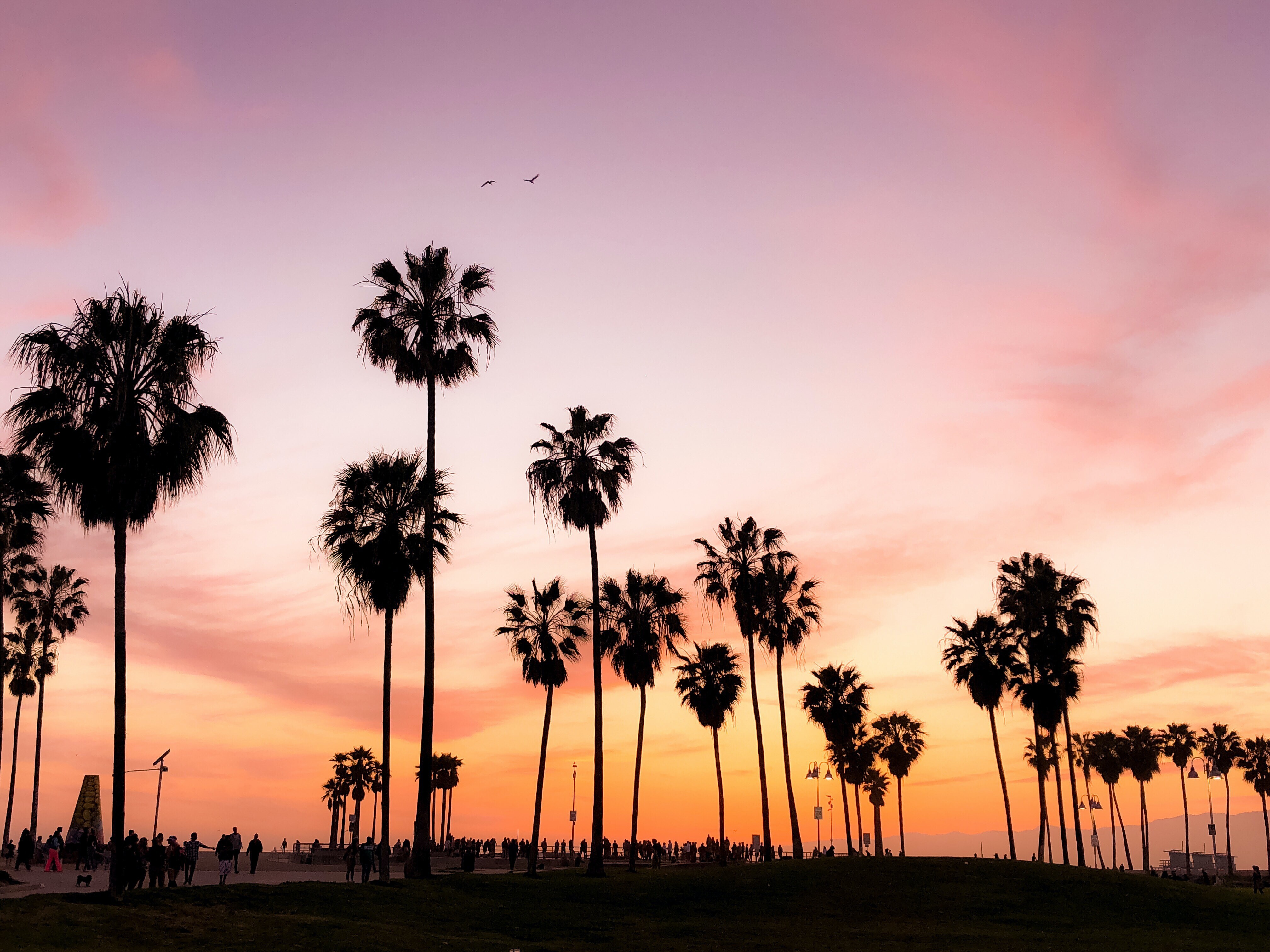
Griffith Park in Los Angeles
Griffith Park boasts an extensive network of trails, catering to both beginners and seasoned runners. The awe-inspiring views of the Hollywood Hills and the bustling cityscape serve as a remarkable source of motivation during your run. Not to mention, the park is also home to notable landmarks like the Griffith Observatory, allowing you to blend your workout with a touch of culture and immerse yourself in the park's natural splendor.
Moreover, Griffith Park offers a range of amenities, including water fountains and restrooms, ensuring that runners can stay refreshed and hydrated throughout their workout. It's no surprise that Griffith Park is widely regarded as one of SoCal's most scenic and accessible spots for a satisfying run.
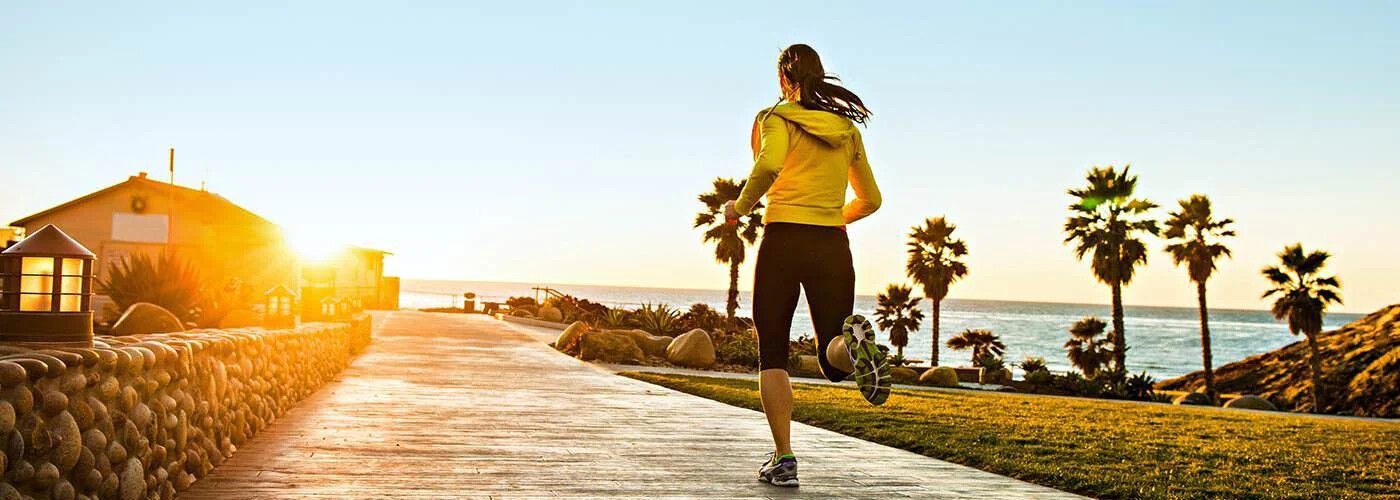
Santa Monica State Beach in Los Angeles
Santa Monica State Beach is the ideal location for you if you enjoy running by the sea. The Pacific Ocean delivers a pleasant, invigorating air as you run down the three miles of white sand beach. You may see some famous sites while running along the beach, including Venice Beach, Muscle Beach, and the Santa Monica Pier. The best time to go is in the winter to avoid the crowds and the scorching temperature, although a run at dusk in the summer is as amazing.
Conclusion
Going to the trail and running your heart out is a fantastic way to stay in shape while being immersed in nature. The five trails described throughout this article are all great places for long runs on varied terrain. With the combination of mountainous regions, beach sides, and scenic city views, there’s something for everyone in California.
In whatever trail you choose to indulge in, remember that every step will bring you closer to unwinding from the stresses of everyday life and closer to becoming one with nature. So put those running shoes on and unleash your inner runner today!
Login to leave a comment
More Prize Money Is Flowing Into Trail Running. What Does That Mean for the Sport?
Annie Hughes, one of the top trail runners in the U.S. for the past two years, had another amazing season running ultra-distance races in 2022. On September 17, the 24-year-old Hoka-sponsored runner and part-time college student won the Run Rabbit Run 100 in Steamboat Springs, Colorado, her fourth win of 100 miles or longer since April. Earlier this year, she won the Coldwater Rumble 100 in January, Cocodona 250 in April and the High Lonesome 100 in July.
Those were all exceptional efforts in really challenging races, but the big difference she experienced after crossing the Run Rabbit Run finish line, 21 hours and 26 minutes later, was that she won $17,500. (And yes, she was handed one of those cartoonish, oversized checks at the awards ceremony.)
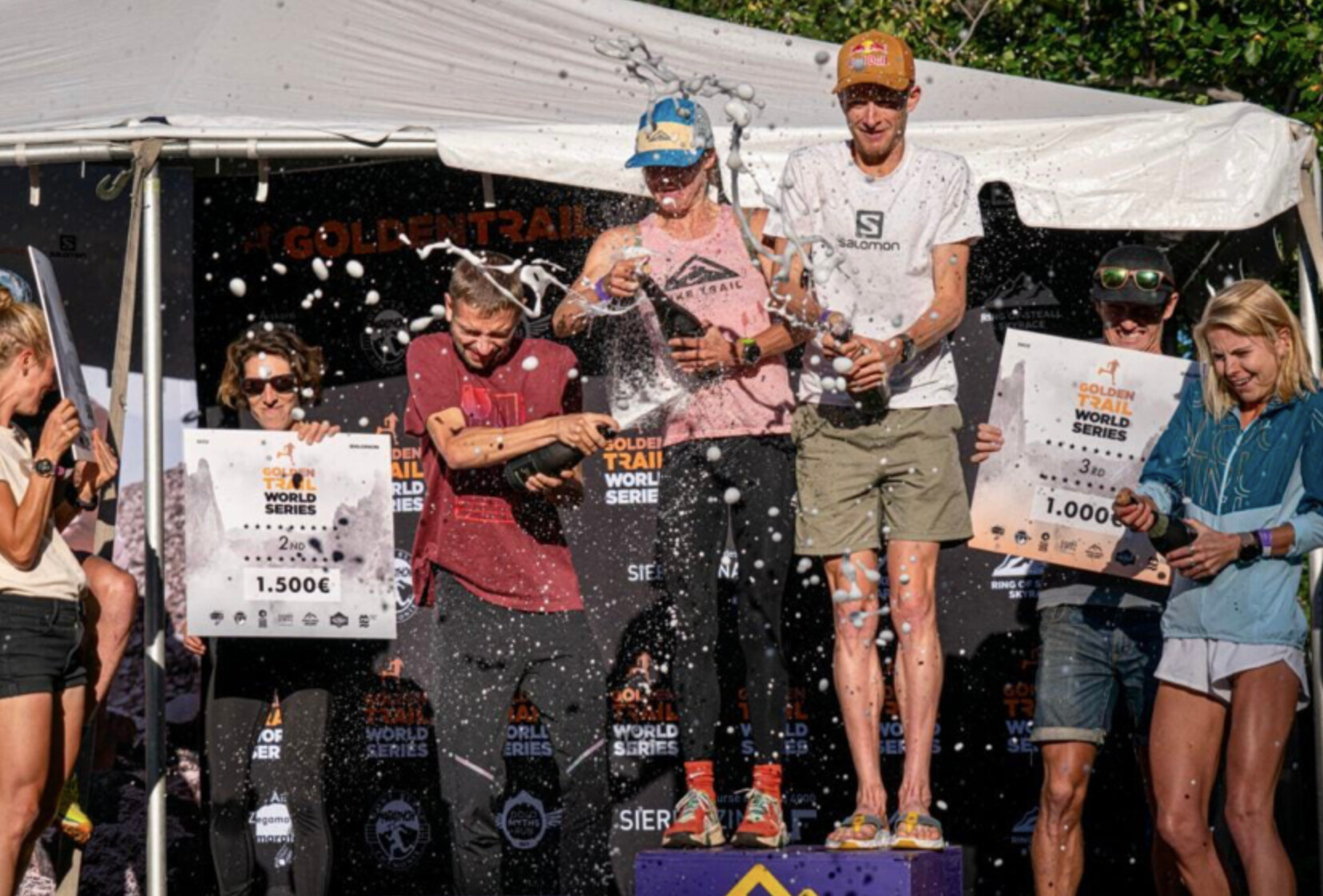
Run Rabbit Run is one of the rare American trail races that offers a relatively large prize purse, and for a decade, it's been the largest in the sport. Hughes earned $15,000 for winning the women's race and split another $5,000 with Arizona trail runner Peter Mortimer (who placed 12th overall) as part of the event's new team competition.
"That wasn't the reason I was drawn to the race, but it was definitely pretty cool to win that much money," Hughes said. "I'm glad I did it, because it wound up being a really great race with an amazing course on a beautiful day."
The origins of trail running were always more about the joy and freedom of ambling through the natural world, and less about the specific time and pace of any run or race, which is why winning big cash prizes is mostly uncommon in the sport, even for top-tier runners like Hughes. Over the past two years, Hughes has won 10 races of 50 miles or longer, yet her Run Rabbit Run victory was the first time she's ever earned money for her efforts.
More sponsorship money and bigger cash prizes are flowing into the sport, helping the top athletes earn a full-time living in the sport and become global stars. But that evolution has also created a desperate need for a unified governing body and more consistent drug-testing as doping becomes a more acute concern.
A Windfall of Prize Money
Historically, America's biggest and most notable trail running races haven't offered any prize money at all-Western States 100, Hardrock 100, Dipsea Trail Race, Leadville 100, Mount Marathon Race, Seven Sisters, Black Mountain Marathon/Mount Mitchell Challenge-partially because races simply couldn't afford to pay it, and also because, at the soul of the sport, that's not what the races were historically about or why most top runners were competing.
But with the continued growth of the sport-trail running has grown by 231 percent over the past 10 years, according to one report-and the dawn of a new level of professionalization over the past decade, there is a lot more money being injected into the sport. That includes more high-profile events and race series, more brands investing in the sport, more sponsored runners and trail running teams, as well as a growing expectation that prize money should be part of the equation as it is in road running, triathlon, and even obstacle course racing.
For many years, The North Face 50 near San Francisco was one of the only ultra trail races in the world to offer a significant prize purse. From its inception in 2006, until it disappeared after 2019, that race famously awarded $30,000 in prize money, which included $10,000 to the top finishers in the men's and women's races, plus $4,000 for second and $1,000 for third. It was a race to look forward to at the end of the calendar year, both for the cash awards and the prize-induced competition that drew top runners from around the world.
During that span, Run Rabbit Run, though a lower-profile race, quietly began dishing out some of the biggest payouts in the sport, in part because race organizers Fred Abramowitz and Paul Sachs believe in rewarding its top athletes for their efforts (as well as giving back to the community via even bigger charitable contributions). The race winnings come primarily from entry fees of the 600-runner event and sponsors, if and when the race has them. That wasn't possible back in the early days of the sport, when entry fees were minuscule and cash sponsors were mostly non-existent, but things have started to change.
Abramowitz and Sachs, who both earn their living as attorneys, are unique in that they want to give back to the elite athletes and the Steamboat Springs community, but they also want to help grow the sport. Abramowitz outlined what he calls "A Blueprint for Sponsors of Ultra Running," a three-page document that explains how and why trail ultrarunning-both as a sport and as individual races-can connect to more casual runners, sports fans, and the general public.
He points to the rampant growth of NASCAR, Professional Bull Riding, and professional poker over the past 20 years from their roots as fringe sports, relatively speaking, to mainstream spectacles with massive fan bases, TV contracts, and social media followings. Trail and ultrarunning aren't there yet, Abramowitz has noted, but they've certainly been growing rapidly.
"Today millions watch those events, though the actual number of participants is minuscule," Abramowitz wrote in his missive. "Ultrarunning can learn from these events: it needs new ideas, new ways of attracting the already committed runners and the casual sports fan to our terrific sport. Fields need to be competitive and races [need to be] dramatic; there are hundreds of 100-mile races, but those that offer competitive fields are a handful at most. Most ultra-races offer spectacular scenery in interesting venues."
Abramowitz said sponsors should support races such as Run Rabbit Run that offer prize money not merely because it's good for sport, but also because prize money can attract competitive fields, and competitive fields attract interest-from spectators, participants, potential sponsors, and the general public. He also points out that having prize money at more domestic races is a way to keep the sport from becoming entirely Euro-centric, which has been an increasing trend in the past several years.
The trend of cash purses seems to be increasing, and on the face of it, that's good for elite athletes capable of podium finishes. But it's a complex topic and one that certainly will simultaneously increase the competitiveness of the sport while, some argue, continue to pull the sport away from its organic, racing-in-nature roots that was mostly viewed as the antithesis of competitive road racing.
On the same day Run Rabbit Run paid out $75,000 in total prize money, the Pikes Peak Ascent awarded $18,000 in prize money for its top 10 finishers-including $3,000 apiece to the men's and women's winners-while the Pikes Peak Marathon, on September 18, had an additional $10,500 in total prize money for the top five runners. The races also offered $2,000 (Ascent) and $4,000 (Marathon), respectively, as course-record bonuses, and a $10,000 premium to any runner surpassing a pie-in-the-sky time well ahead of the course records. None of those records were broken, but the $28,500 in total prize money-partially backed by the Salomon-sponsored Golden Trail Series-was one of several large prize purses offered at U.S. races this year.
Other big American prize purses were also primarily tied to the Golden Trail Series events-the $50,000 spread over four races at the mid-June Broken Arrow Sky Races in Olympic Valley, California, and the September 25 Flagstaff Sky Peaks 26K race in Flagstaff, Arizona, where runners competed for $18,000 in prize money and a chance to compete at the Golden Trails World Series Final, and the $15,000 winner's earnings at the Madeira Ocean & Trails 5-Day Stage Race in October.
Also of note, the November 18-20 Golden Gate Trail Classic paid out $25,000 in total prize money to the top five finishers in both the 100K and half-marathon races, which were part of this year's nine-race $270,000 Spartan Trail World Championship Series.
Meanwhile, the Cirque Series, sponsored by On, paid out $3,600 in total prize money at each of its six sub-ultra mountain running races in the U.S., including $1,000 for the men's and women's winners. The Mt. Baldy Run-to-the-Top on September 5 in Southern California offered $3,000 to runners who broke the event's longstanding course records, and Joe Gray and Kim Dobson obliged by taking down each mark.
Most U.S. Trail and Mountain Running Championships have a minimum of $2,000 in prize money. Typically that comes from regional sponsors eager to support the local race organizations, such as the case with Northeast Delta Dental's contributions behind this year's Loon Mountain Race in Lincoln, New Hampshire, which hosted the U.S. Mountain Running Championships. That event had a $1,500 total prize purse that was paid out to the top three men and women in each race, but it also had an additional $1,500 for an Upper Walking Boss premium that was spread among the top three fastest times in each gender on the super-steep upper part of the course.
Meanwhile, the 2022 World Mountain and Trail Running Championships in Thailand paid out $66,000 to the top five finishers over four races, including $4,000 to the winners of each event.
"(The prize money) is way better than it's ever been, both for the athletes earning it and the number of sponsors who are contributing to it," says Nancy Hobbs, executive director of the American Trail Running Association and the chairperson of the USATF Mountain Ultra Trail Council that oversees national championship races and the U.S. Mountain Running Team.
From a longer view over the past decade or so, Joe Gray agrees there is more money coming into the sport than ever before. As a top-tier pro since 2008 and 21-time U.S. champion, he's regularly won more prize money at high-level races in Europe for more than a decade. But more than the growth of prize money, he has seen more brands interested in putting money behind athletes, races, and the sport in general.
"I think there has always been prize money there, and if you're successful you could make a lot more money really quickly," said Gray, a two-time World Mountain Running Champion. "I do think there is more money coming from the sponsors paying out better contracts and bigger bonuses, which I think will wind up being more beneficial to athletes overall."
Most elite trail runners get annual stipends from their sponsoring brands and bonus money for top performances. Gray is backed by Hoka, but he also has sponsorship deals with Fox River Socks, Kriva, Never Second, Knockdown, Tanri, Momentous, Casio, and GoSleeves. In addition to Hoka, Annie Hughes gets additional support from Ultraspire, Coros, and Tailwind Nutrition. But the life of professional trail runners-independent contractors who don't get healthcare and retirement program benefits-can get expensive with the growing cost of travel, regular bodywork/physio treatments, and private health insurance.
The sport's top-tier elite athletes-Joe Gray, Kilian Jornet, Courtney Dauwalter, Jim Walmsley, Maude Mathys, and Scott Jurek, among others-make a good living from their sponsorships. But there are really only a handful American trail runners making more than about $50,000 a year from shoe brand sponsorships. (Most "sponsored" trail runners are making somewhere between $10,000 to $30,000 per year.) The bottom line is that winning prize money, for those who are fast enough to consistently finish on the podium in big races, certainly helps make ends meet and is necessary to keep the sport's top athletes from having to work other jobs so they can focus entirely on training, recovery, and racing.
"This [2022] is the first year I've gone all-in on trail running," said Hughes, who worked as a waitress in Leadville the previous two years. "I'm able to live off what I make, but I'm not really saving anything. So it was really nice to win that money because then I can put some away in savings."
Higher European Standards
So far, Abramowitz appears to be right about the sport shifting to more of a European focus, and it's, at least in part, tied to the increased prize money that has attracted competitive athletes. While many top-tier European events have paid out modest prize purses for years, some of those races have also helped out visiting runners by way of travel stipends, hotel accommodations, or appearance fees. That's partially because European races are generally larger (500 to 1,000 participants or more) than U.S. races (typically fewer than 500 participants).
Unlike Hughes, who only raced in the U.S. this year, American runner Abby Hall, who runs for the Adidas-Terrex team, raced three times in Europe and earned prize money each time. She placed second in the Transgrancanaria 126K in the Canary Islands in March (which doubled as the Spartan Trail World Championship), finished third in the CCC 100K in Chamonix in August, and won the Transvulcania by UTMB 72K back in the Canary Islands in October.
Like Hughes, Hall receives an annual stipend and race bonuses from her sponsor, but admits it's been nice to have more opportunities to win money-both because it helps her make a living wage and because it's consistent with other professional endurance sports.
"In the past, it hadn't even been a consideration before, for how income would work out as an athlete," Hall said. "But this year it actually added up to be a decent amount. I'm grateful for the opportunities."
In 2022, American runner Hayden Hawks won an off-the-radar 100K a race in Krynica, Poland, and brought home the 100,000 zloty winner's prize ($26,000), one of the bigger individual purses ever awarded in trail running. In 2017, when Hawks won the CCC race, he didn't win anything because UTMB had refused until 2018 to offer prize money at its races, partly because race founders Catherine and Michel Poletti have believed that increased prize money will bring more incentive for some athletes to consider doping or that agents would take too big of a cut.
UTMB finally began offering prize money to podium finishers in 2018 with a total purse of about $34,000 (35,000) and continued that through 2021. But after forging a business relationship with Ironman and launching the new UTMB World Series, it has increased the prize money awarded in Chamonix. In 2022, UTMB said it paid out about $162,000 in total prize money (the approximate equivalent of its stated 156,000 prize purse) to the top 10 men and women finishers of the UTMB, CCC, and OCC races.
That includes $10,400 to the winners of each of those races, with approximately $5,200 going to second-place finishers and $3,125 for third. Fourth- and fifth-place finishers in each of those races earned about $1,500, while 6th through 10th took home $1,000.
While those more notable ultrarunning paydays can be big windfalls for a trail runner, they still pale in comparison to what elite-level road marathoners and triathletes earn at the biggest races that have a much larger audience, including live TV coverage. For example, the 2022 Boston Marathon awarded $876,500 in prize money and $150,000 to the winners, while New York City Marathon paid out $530,000 in total prize money at its November 6 race, including $100,000 to the men's and women's winners. The 2021 Ironman World Championships in St. George, Utah, had a $750,000 prize purse, including $125,000 to the winners, similar to what was awarded at the 2022 Ironman World Championships October 6-8 in Hawaii.
While only a few top trail runners could have opted to pursue a marathon or triathlon career instead of trail running, what's more relevant is the spike of growth trail running. Although it is not yet internationally televised as major marathons and triathlons are, the surge in participation and livestream viewing options is starting to bring in more media attention and sponsorship money than ever before. And more media attention begets more participation and professionalization.
"I think we'll definitely see ultra-trail running continue to grow for years to come," says Mike McManus, director of global sports marketing for Hoka. "I think it's at a point where it's just on the cusp of the real growth that's coming and all that will come with it, similar to where the marathon was in the 1980s and triathlon in the 1990s. It might never be as big as marathoning, but trail running will definitely get more built out as it continues to grow."
"It's nice to make some money for the sport we do. This is my job, and being able to support my family with a decent chunk of money is pretty nice," Hawks says. "I definitely don't go after races just for money, but if there is a gap in my schedule where I can win a little bit of money, I am definitely going to take advantage of that for sure. I want to continue to be in this sport and live this lifestyle as long as I can, so knowing that there are sponsors and races investing more in runners is something I am really grateful for."
The Ongoing Dilemma
While Abramowitz and Sachs have been eager to give out prize money at Run Rabbit Run, not all races are equipped to do so. Many U.S. races are garage-shop operations that barely break even, while some are just too small to make it happen. The Western States 100-Mile Endurance Run (WSER) is operated by a non-profit organization, and offering prize money goes against the mission of the race, says race director Craig Thornley.
The biggest concern that race directors have, including Thornley, is that prize money attracts athletes willing to use performance-enhancing drugs because the sport lacks a comprehensive anti-doping strategy that includes both post-race testing and out-of-competition testing.
"In general, I think the prize money is probably a good thing because professional athletes are able to make a living," Thornley said. "But I think, as a sport, we'll probably have to be more aware of people trying to use drugs or some other ways to get that prize money."
A few years ago, the Western States 100 famously announced its zero-tolerance policy regarding the use of performance-enhancing drugs (PEDs) that prohibits any athlete who has been determined to have violated anti-doping rules or policies-by World Athletics, World Anti-Doping Agency (WADA), U.S. Anti-Doping Agency (USADA), or any national sports federation-is ineligible for entry into the WSER. Although Western States has regularly drug-tested its top finishers, only a few other big trail or ultra-distance races test its finishers with a WADA-sanctioned program.
Thornley believes the incentive to cheat has probably increased as more brands have stepped up to sponsor athletes, but the increase in prize money probably makes it more tangible.
He's not the only one. Ultrarunning coach and podcaster Jason Koop, an outspoken proponent for authentic drug-testing in the sport, agrees, saying that it's time for the sport to collectively start developing mandatory drug-testing protocols, even on a small scale. While he doesn't believe doping is prevalent in trail running, he believes it's definitely already an issue.
"People would be fooling themselves if they thought that every trail running performance was clean. If you think that that's the case, then I have a bridge to sell you," Koop says. "Prize money or no prize money, I think the bigger thing is that the ecosystem is developed enough and there is enough financial reward at stake to where everyone kind of owes it to everybody else to get something done."
In other words, it's time for the sport to take some next steps-either by big governing bodies or small factions of people interested in the long-term health of the sport-to develop more structure and universal anti-doping policies.
by Trail Runner Magazine
Login to leave a comment
VO2 Max Output As A High-Performance, Anti-Aging Superweapon
This article is purely theoretical. Some readers will think that the theory is obvious on its face, and others will think that it's wrong. The joy of talking about training theory at the intersection of science and anecdote is that there are too many physiological metrics to track, and too many variable responses to interventions, so the resulting conclusions fall somewhere on the spectrum between fundamental truth and biased bullshit. Throughout, I'll try to check my biases and acknowledge the unknowns.
You know I'm nervous about writing an article when the first paragraph is undercutting myself with disclaimers. To be fully real with you: I am unsure on this one.
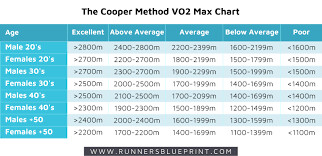
This article tries to articulate an unexpected observation that now forms a cornerstone of my coaching approach, but I have too much self-doubt to ignore my biases. It's like looking at a diagram of constellations in the night sky. The diagram might say: "This is the mighty hunter, pursuing the courageous bear."
So remember, as I try to break this down, I'm describing a scene with a mighty hunter, but I'm painfully aware it might just be dots and a phallus.
Here it is, distilled down to 3 sentences:
Output at VO2 max while climbing (measured via grade-adjusted pace) may have a high predictive value for athlete progression and regression over time, particularly with age.
The metric likely is a proxy variable for limitations of mechanical output that are faced by some athletes from the start of their running journeys, and confronted by all athletes with age.
Constant reinforcement of the metric may improve performance at all effort levels, including long ultras, and can seem to reverse the athletic decline process in some cases.
That's it. To paraphrase The Lion King: Simba, let me tell you something that my father told me. Look at the stars. YOU SEE WHATEVER YOU WANT TO SEE.
Observations From Athlete Training
Let's have some fun with training theory, reverse-engineering why I think this conclusion is significant and may be overlooked. When my co-coach/wife Megan and I started coaching (we talk about this topic more on episode 114 of our podcast), we began as acolytes to coaches like Renato Canova and Jack Daniels who excelled with Olympic-level athletes on the road and track.
We added some wrinkles here and there based on data we saw along the way, which seemed to especially manifest themselves with athletes that might not have Olympic-level VO2 maxes, whether due to genetics or age (VO2 max measures peak oxygen utilization during exercise, has a strong genetic component, declines with age, and is not highly trainable). You have probably seen me write about a lot of those wrinkles: plenty of fast strides, a higher proportion of short yet controlled intervals, and the heavy use of hill intervals year-round.
But Megan and I both kept hitting the same stumbling block: athletes over age 40 just didn't respond as well as we would like.
So we tried something new. With sub-ultra trail runner Mark Tatum and a few other athletes, we moved almost every workout into the hills, with an astounding number of power hill strides, and at least one session most weeks with short hill intervals. Mark and some others had breakthroughs, seemingly giving a big middle finger to the aging process. For Mark, a few years of training later, it led to an overall win at the Dipsea Race.
That made sense with aging athletes. Hills reduce impact forces and may increase muscle recruitment/mechanical demand (2017 review article in Sports Medicine), and short intervals may counteract natural VO2 max reductions, so they are great for the aging athlete. I've written about that before, as have others. It was nothing new, although maybe the approach was more committed to the bit.
But then something fascinating happened. A few younger athletes that we coached also seemed to have issues where traditional speedwork didn't lead to the expected adaptations. Maybe it was repeated injury cycles without clear explanations, or maybe it was just an unexplained performance reduction. So we tried a similar intervention. While results varied, the hill emphasis had a substantial effect size on results in our team, including preceding a couple national championships.
Now we were intrigued. Is it just the specificity of hills for trail running? Possibly, but we saw similar improvements in some road runners. Could it be an improvement in the VO2 max variable? That's doubtful, since there's little evidence that it can increase much in trained athletes. Lower injury rates? That likely plays a big role, but later we started to see similar results in athletes who rarely got injured. Or, to summarize: The hunter, or a random association of dots?
As we started to incorporate short hills more for all of our athletes, with all different backgrounds, we started to hone in on one primary explanation: the unique neuromuscular and biomechanical demands of mechanical output in running.
Here, mechanical output is shorthand for how aerobic processes interact with the musculoskeletal, biomechanical, and neuromuscular systems to create speed. A thorough explanation of mechanical power output is in this 2018 article in the Journal of Biomechanics, but just think of it as how each stride transmits force, rather than as conveying everything that goes with the technical term. For our purposes, effort level at VO2 max does not refer to the specific physiological measure, but is a general shorthand for high-yet-controlled outputs.
We have seen that if an athlete can improve their output around VO2 max on hills, they can counteract - even reverse - part of the athletic aging process at all distances. The reason that the short hills should lead to more broad-ranging development is that athletes accumulate lots of aerobic work over time, and those lower-level aerobic gains accumulate.
There is nothing new about this concept. For example, Norwegian training principles are so hot right now. Most of the focus is on the high volume of threshold work. But if you look closely at some of the sample weeks, you'll sometimes see a day full of short, fast hills (and that's for young, immensely talented athletes). Similar concepts were rumored to be included in the training of Jake Wightman, World Champion in the 1500 meters. Whether it's Lydiard-based systems from the 1960s and 1970s, Canova-inspired hill sprints, or hybrid approaches, once you start looking, you'll see these elements all over, even for athletes that seem to have almost no genetic or age limitations.
Possible Physiological Explanation
Okay, let's go back to first principles. VO2 max peaks at a young age, and it isn't highly trainable. So how do athletes keep getting faster if their peak oxygen intake is staying flat or declining?
The answer is that their output at VO2 max improves, usually measured as velocity at VO2 max, even as the denominator doesn't improve. The prototypical example is Paula Radcliffe (see this 2006 study in the International Journal of Sports Science & Coaching), whose VO2 max actually decreased from when she was a champion junior athlete, but her running economy (the amount of energy she used to run fast) improved by 15 percent. Those running economy improvements likely come from some mix of lower-level aerobic development leading to more efficient cellular processes of fatigue management, neuromuscular/biomechanical efficiency, and mechanical output. I'm not concerned with how much oxygen an athlete can consume, but what they do with the oxygen they have.
Running economy can be measured across multiple intensity levels. At the intense end of the spectrum, you have velocity at VO2 max (think 10ish minute effort, with variance). More toward the middle is critical velocity or velocity at lactate threshold (~30- to 60-minute effort). At the easier end of the spectrum is velocity at aerobic threshold (2-3+ hours, depending on the athlete). With age, vVO2 goes down first (often in an athlete's mid-20s), followed by vLT (30s or later), then vAeT (which can stay higher for a long time due to the aerobic component). That makes intuitive sense-athletes move up in distance with age by necessity as VO2 max and mechanical output go down, while long-term aerobic development is ongoing.
Side note: there are 10 statements in the preceding paragraphs that are controversial in exercise physiology. Sorry about that. If there's anything I learned from eating a lot of cereal as a kid, it's that if you spot them all and mail proof of purchase to General Mills, they might send a free toy!
Back to it. Our theory is that focusing too heavily on the aerobic side of the running economy equations misses out on the mechanical power side. Yes, VO2 max will decrease with time. But based on what we have seen, the mechanical output associated with VO2 max doesn't need to decrease much at all. And it can even go up very far into an athletic journey!
Mechanical Limitations
Why is that significant for an athlete competing in longer races? Think back to the experienced 60-year old athlete who progresses a bunch with short hill intervals. Their VO2 max number likely can't change much at that point of their athletic journeys, but we think that their mechanical output can. And because mechanical power is a strong performance indicator at all efforts in aging athletes, it doesn't matter that the short hills are non-specific to their race distances. It's the highest-yield stimulus for output, and it pushes back the strongest against the inertia of aging, so they get faster at everything.
If you're 50+, I think that you can take that to the bank. Focus on mechanical output/strength alongside aerobic development, and you'll be rich as hell. Now, let's dive into a more speculative investment.
The hardest logical leap is to take these principles and apply them to younger athletes. Why might they progress even when they aren't limited by mechanical output in the same way?
Our theory: they are limited in that same way, just to a less clear extent. In fact, most of us have some mechanical limitations that are semi-independent of traditional aerobic development.
Talented, elite athletes are the origin point for many training theories, and most of those athletes have few limits associated with vVO2-that's why they're elite in the first place. So they can focus more heavily on the aerobic-input components of speed, plus specific training for their events. But for most of us, mechanical power at the top-end of aerobic capacity is a limiter from when we are young, and it only gets worse with time.
That's one reason we strongly encourage athletes to eat enough, always. Running is a power sport, even if it doesn't always feel that way. And that may add another explanation of why athletes who restrict food almost never improve over time.
Theoretical Implications
Since mechanical output is the true theorized limiter, it may be better to do many of the sessions targeting it on uphills. Flat intervals are fantastic and important at times, but many athletes end up not having the biomechanical and neuromuscular efficiency to translate their aerobic ability into the same output. In our data, an athlete who is not extremely fast (in a road/track sense) will often have a faster grade-adjusted pace on a 2-minute hill interval than pace on a 2-minute flat interval, often by 20-30 seconds per mile. Combined with the higher muscular demand and lower injury risk, output around VO2 max seems to be optimized on hills.
A quick disclaimer: we could easily be confusing cause-and-effect here. Perhaps it's all driven by reduced injury rates and lower soreness levels, creating more consistency over time (or any other explanation you can think of). Going backwards from outcome to mechanism is problematic for 99 reasons, and for the strength of this theory, each and every one of them is a bitch.
But the practical takeaway is this: we have seen that if an athlete can improve their output around VO2 max on hills, they can counteract - even reverse - part of the athletic aging process at all distances. The reason that the short hills should lead to more broad-ranging development is that athletes accumulate lots of aerobic work over time, and those lower-level aerobic gains accumulate.
The aerobic system can continue to improve, but for many athletes, it runs into a ceiling that we think is often set by mechanical output. If you raise that ceiling, there can be a positive feedback cycle where improved mechanical output allows the improving aerobic system to translate to better running economy, which improves mechanical output more, and so on.
The Big Takeaway
Don't let your mechanical output be too strong of a limiter, no matter what training approach you use. For us, that involves three main elements.
First, athletes do hill strides year-round to encourage max power development. That can be as simple as 2 sessions of 4-6 by 20-30 second fast hills in the 2nd half of runs each week, or adding hill strides after a flat workout. Or it can be bigger, dedicated sessions like in the Norwegian training sample weeks. Flat strides can also work for this purpose, particularly for advanced athletes.
Second, athletes periodically do moderately hard hill intervals, as often as weekly for aging or injury-prone athletes, and as little as every 6 weeks in durable track or road athletes (with other sessions being on flat or rolling terrain). Our usual guideline is 12-20 minutes of total intervals, with each interval being 3 minutes or less with run down recovery between them. Simple go-to examples are 16-20 x 45 seconds, 8 x 90 seconds, 6 x 2 minutes, or 5 x 3 minutes, though you can get creative with it based on what's the most fun for you. Mix up the gradient, with the sweet spot being 8%, but it's cool to have fun with steeper or shallower grades, too.
Third, do strength work. We are partial to Mountain Legs and Speed Legs, but anything that improves your strength can work. Just avoid overdoing it.
And remember: this is just one element of our training theory, and our training theory is a grain of sand on the beach of training theories that are out there for free on the internet. Even for us, it interacts with hundreds of other concepts. Listen to your body and do what works for you. Ignore this if you disagree. Send all of your complaints to General Mills.
But don't accept that getting weaker is a foregone conclusion. Aging is inevitable. If you zoom out far enough, slowing down is inevitable, too. But slowing down is not inevitable tomorrow or next year. And I think there's a strong argument that it's not inevitable 5 or 10 years from now either. What do we say to
by Trail Runner Magazine
Login to leave a comment
In order to win his first Dipsea Race 28-year-old Eddie Owens had to study it first.
Two years ago when he moved to San Francisco, Eddie Owens knew nothing about the Dipsea – the country’s oldest trail race – other than what he heard from area runners. It prompted him to visit Marin County to meet Dipsea historian and author Barry Spitz, who has written the quintessential book about historic race, “Dipsea: The Greatest Race.” Owens bought a book from Spitz and said he was curious about the fastest times on record in the race.
Apparently, Owens not only read about them, but he appears hell bent on eclipsing them.
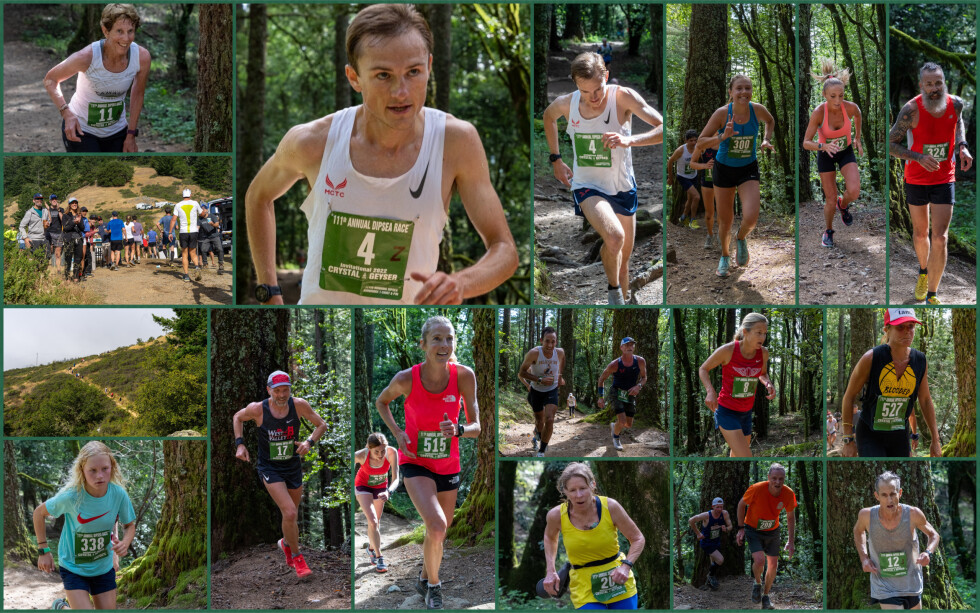
With a time of 48:35 on Sunday – more than a minute faster than anyone else in the field – Owens easily won the 111th Dipsea with a race for the ages. He became the first runner in his 20s to win the historic 7.5-mile foot race from downtown Mill Valley to Stinson Beach since 25-year-old Carl Jensen was the last person to win the event from scratch in 1966.
That feat followed Owens’ astonishing Dipsea debut effort last November when he denied Alex Varner of a 10th Best Time Award by finishing fourth overall with an actual running time of 47:47, the fastest in 26 years.
Owens, who grew up in Brooklyn, N.Y. and attended Princeton University, obviously is a fast learner when it comes to the Dipsea.
“I’ve run races all over the country and all over the world, but there is nothing like the Dipsea,” said Owens, who was a member of Team USA at the 2021 World Mountain and Trailrunning Championships. “I look forward to coming back for many years and decades to come.”
Owens was given a one-minute head start on Sunday in the Dipsea, a unique race in which each of the 1,500 runners are assigned head starts based on age and gender. With a two-minute head start Paddy O'Leary, a 34-year-old cancer researcher from San Francisco, finished second one minute and 17 seconds behind Owens and Clara Peterson, a 38-year-old mother of four from Corte Madera who was a two-time All-American cross country runner at Duke University, was third. She started seven minutes in front of Owens’ starting group and posted the fastest time (58:45) by a female in the race, finishing one spot ahead of Stephanie Howe of San Rafael, another two-time NCAA All-American in college (Northern Michigan University) who was making her Dipsea debut. Fiona Lyon and two-time Dipsea winner Chris Lundy finished right behind, the first time since 1992 that four females have finished in the Top Six of the Dipsea.
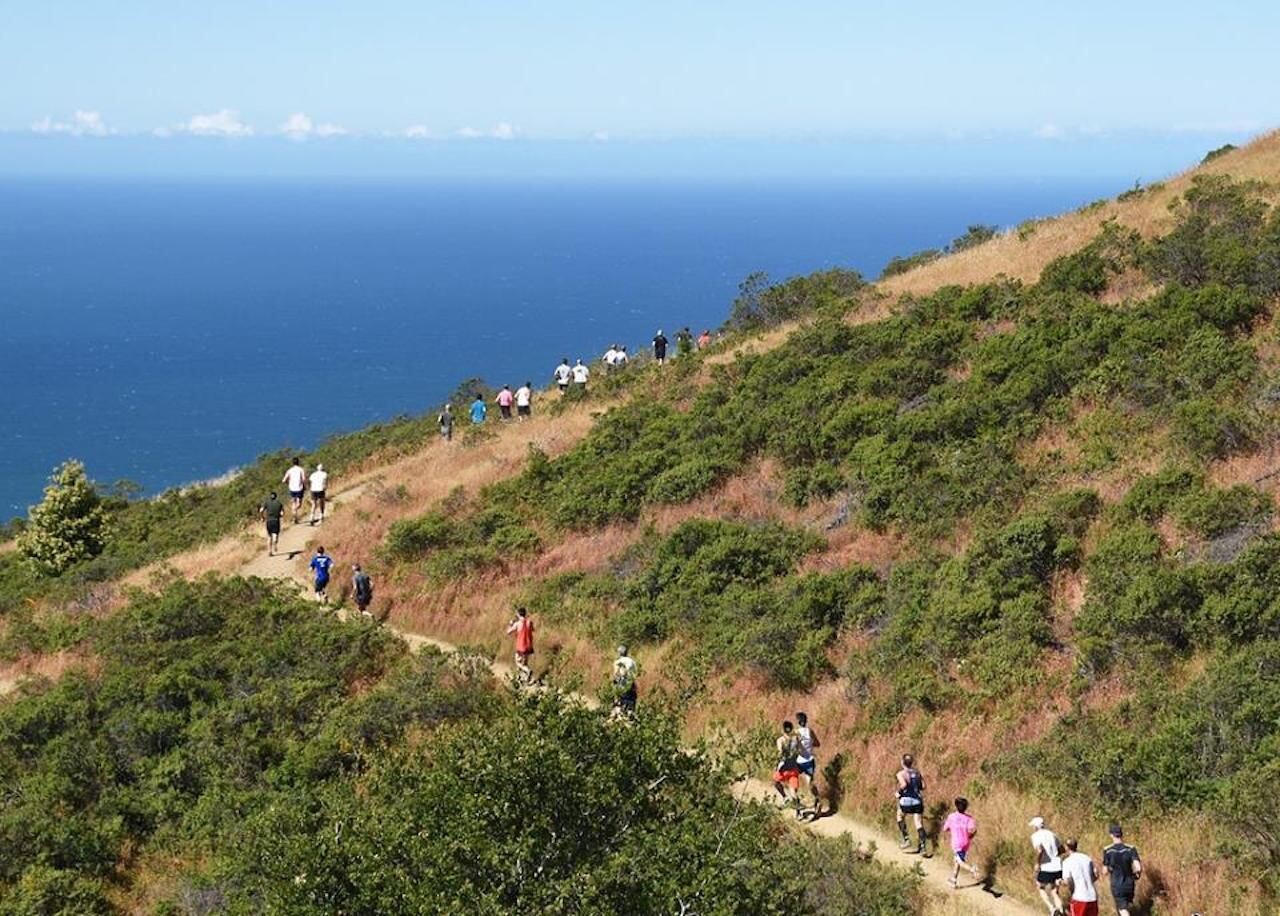
Mark Tatum, the defending Dipsea champion from Colorado Springs, CO, placed eighth overall.
Peterson and Howe -- along with two-time Dipsea champion Diana Fitzpatrick of Larkspur, 25-time Black Shirt winner Brad Byron of Penngrove, and Tanya Fredericks of San Anselmo – pushed the Tamalpa Runners into a remarkable first-ever tie with rival Pelican Inn Club for the Dipsea’s Team Trophy. Alex Varner, Cliff Lentz, Don Stewart, Jeffrey Stern, and John Gardiner were the top runners for Pelican Inn which won the team trophy last year.
The mother-and-son team Elena Shemyakina of Geneva, IL and Mikhail Shemyakin of Mill Valley won the Alan Beardall Family Trophy for the third time and Berkeley High School student Oliver Nickelsen claimed the First High School Boys Finisher for the second year in a row and won another Dipsea Black Shirt. He was joined in that select group by seven first-time Dipsea Black Shirt winners (Carolyn Latham, Benjamin Koss, Anthony Fagundes, Taylor Fortnam, Lacee Phillips, Patrick Wachter, and Ibet Allen.)
Emma Dunmire of Tamalpais High School was the First High School Girls Finisher, and Patrick Green of Long Beach was the first finisher in the race from the Dipsea Runner’s Section.
Diana Fitzpatrick, who won her record-tying 19th Dipsea Black Shirt to match Dipsea Hall of Famer Jamie Rivers, was named the recipient of the Norman Bright Award for “Extraordinary Effort in the Dipsea Race” in a post-race awards ceremony staged in person for first time at Stinson Beach Park since June 2019 before the COVID-19 pandemic. Robert Alexander, who made his Dipsea Debut in 1984 at the age of 32 when he placed 13th overall, was named the recipient of the Dipsea Demon Award for “dedication, perseverance and performance over time” to honor ” the late Jack Kirk, who completed a record 67 consecutive Dipseas, the last at the age of 95. Alexander, 66, competed in his 38th consecutive Dipsea on Sunday. Longtime Dipsea volunteer Mari Allen, who led the charge in organizing a centennial celebration of the Women’s Dipsea Hike in April, was named recipient of Red Tail Hawk Award for “Leadership, Dedication and Sportsmanship” named in honor of the late Jerry Hauke, the Dipsea Race director for 37 years.
This year’s Dipsea race featured runners from a total of 30 states plus the District of Columbia were entered in the 111th Dipsea from as far away as Maine and Italy.
The oldest runner entered was 84-year-old Norman Pease of Orinda and the oldest female entered was 80-year-old Emma Ulvestad of Mill Valley. The youngest girl entered was 8-year-old Caleesi Beck of Mill Valley and the youngest boy entered was 5-year-old Christopher Ciaschini of Mill Valley.
Login to leave a comment
The Dipsea Race
First run in 1905, the Dipsea is the oldest trail race in America. It is run every year on the second Sunday in June. The scenic 7.4 mile course from Mill Valley to Stinson Beach is considered to be one of the most beautiful courses in the world. The stairs and steep trails make it a grueling and treacherous race....
more...Ultra-Trail du Mont-Blanc Partners with Ironman
Trail running grows up, and with it comes an uncertain future.
Did you feel the ground shake under the trail during your last run? You might have. Because this morning at 10 a.m. Paris time, Chamonix, France, was the epicenter of an earthquake that radiated outward and shook the trail-running world. The Ultra-Trail du Mont-Blanc, our sport’s most prestigious week-long series of ultramarathons, just announced that it is partnering with Ironman, the global triathlon brand. The partnership is comprehensive and international in scope. It’s a fitting moment for the world’s most iconic race, which turns 18 and enters adulthood this year.
The announcement was surprising-not-surprising. The not-surprising part? Trail running has reached critical mass and continues to grow, and for private-equity investors that means that the sport is officially on the radar. On top of the numbers, the trail-running demographic is a desirable one for investors.
“Healthy living is really on fire with investors right now. People have seen companies like Peleton do really well,” says David Lavallee, a former investment banker who lives in Chestnut Hill, Massachusetts, and now invests and operates endurance-related companies. Lavallee sees opportunity within the sport, too. “Trail running has been synonymous with ultras for the last 20 years. But there’s huge room for downward growth, for individuals who want to run a 10K trail race.” And as more people experience trail running? “That fuels the understanding that there’s something really big going on here,” he says. “And it has all been amplified by the pandemic.”
Media Mashup
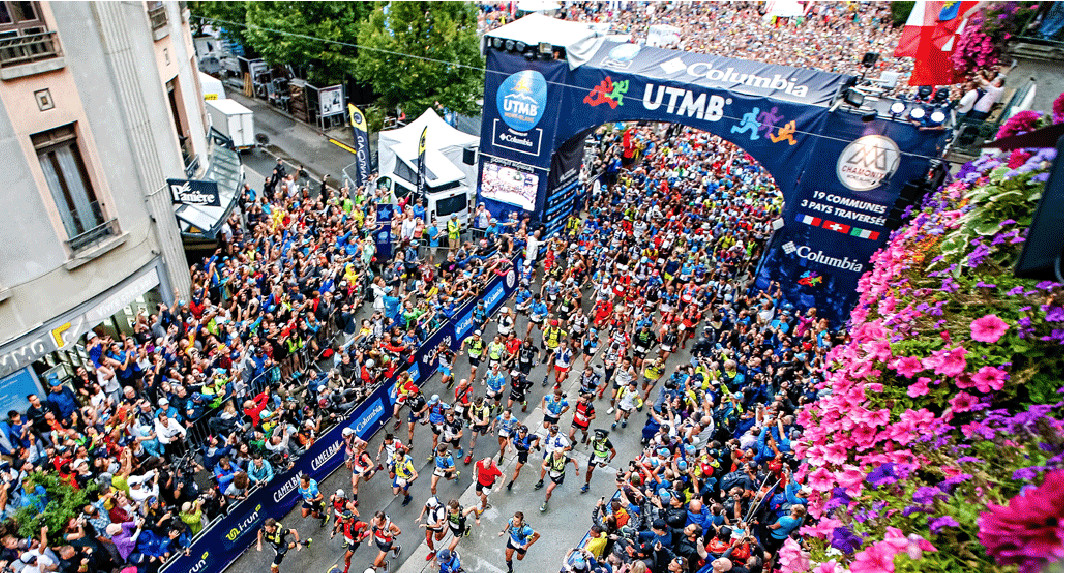
In the trail-running-media world, dollars are already flowing in. U.S. trail-running publishers have been snatched up by larger entities. The website irunfar.com has gone to Lola Digital Media, owner of a dozen other outdoors-oriented publishers, among them Gear Junkie. Trail Runner magazine was acquired last October by Pocket Outdoor Media, which subsequently bought Outside Magazine, and now operates under that iconic publisher’s brand name. Last September, the investment division of Nashville software company Atiba Labs purchased the website ultrasignup.com from its founder, Mark Gilligan.
In the case of the new UTMB-Ironman partnership, Ironman’s investment only goes so far. According to UTMB, their company has the majority ownership; Ironman has a minority stake, and there is no option for Ironman to take control of UTMB. Ironman presence at UTMB events will be low key, as well, with no Ironman branding at UTMB races.
“Ironman is a long-distance-triathlon brand,” said Andrew Messic, CEO of the Ironman Group, “and we intend to keep it that way.”
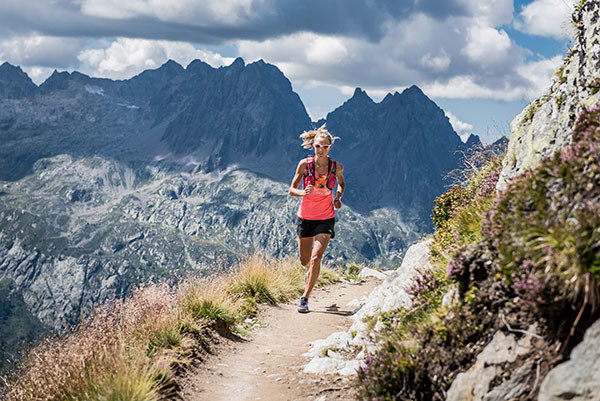
How It Will Work
The surprising part? It really did happen, and now the trail-running world has to think about what comes next. The announcement of the UTMB-Ironman partnership brings with it the potential for deep changes to trail racing, for example. UTMB is calling its new global race series the “UTMB World Series,” which breaks down into four categories of races: World Series Qualifiers, Events, Majors and Finals. Qualifier races, whose numbers will apparently be in the thousands, give “privileged access” to World Series Events and World Series Majors, both of which feature 50K, 100K and 100-mile distances. Each World Series race gives a participant one lottery entry (UTMB calls them “stones”) to the finals in Chamonix. The World Series Majors are the flagship races on each continent, with two entries to the Chamonix lottery. Between the Majors and Events categories, UTMB expects to have 30 to 40 races take part.
Everything points toward Chamonix and the World Series Finals—and the only way to get there will be through the new race series. To get to Chamonix, runners will also need to finish a race of comparable difficulty in one of the other UTMB race series.
Notably, no U.S. races were announced as part of the press release. “Trail running was born in the USA… [but] it’s not easy for a French company to develop something [there],” said UTMB Co-Founder and Co-Owner Michel Poletti. “That’s part of our decision to partner with Ironman, is that it will be easier for them to develop the sport in the U.S. than for us in France.” Poletti noted they are talking with “many other races in the world, including the United States.”
The current Ultra Trail World Tour, in which UTMB owns a controlling interest, will cease to exist in January 2022. Some of the races currently in that series will join the new UTMB World Series Majors. Meanwhile, the other UTMB races that take place in Chamonix, MCC (40K), TDS (145K) and PTL (300K), will continue, with race registration procedures that will be announced this fall, according to UTMB staff.
What Does It Mean For Trail Running
In the trail-running world, Ironman is not without its branding challenges. Corte Madera, California’s Jeri Howland, 65, has known both the trail-running and Ironman world for several decades. She’s ticked off 21 Ironmans, is a seven-time champion, and at age 46 set an age group world record. When it comes to trail running, she’s won her age group in over 30 races and twice has been female champion in the Bay Area’s legendary Quad Dipsea race. She spoke to Trail Runner broadly on the idea of Ironman possibly entering the trail running.
“Ironman would bring in a lot of hype,” says Howland. “They think it’s part of the attraction. I don’t think trail runners would like that.”
Culturally, at first glance, the two worlds do seem somewhat at odds. “Triathletes have a ‘look,’ dressed in the latest gear,” Howland says. “Runners are simpler and colors are muted. One is glossy and the other is matte.” It’s a polite tension that already exists in the trail running world—between European runners in their pricey “kits” and American runners, for whom duct tape and shirtless running are their own form of fashion statement.
Fashion aside, Howland thinks that trail running could ultimately benefit. “Once triathletes realize how great the return on investment is for them in ultrarunning, they may turn to the sport. It’s much simpler than taking a bike and wetsuit with you. And triathletes are always looking to expand their endurance capacity. They’d jump in.”
And, always, there is the profit motive, as both UTMB and Ironman are for-profit entities, and the latter sometimes seems intent on pushing the envelope on pricing boundaries. During the pandemic, Ironman offered deferments but refused to offer refunds. Many registered athletes were irate, and filed a class-action lawsuit, which was summarily dismissed by a US District Court Judge this past January. Even in more normal times, says Howland, “The cost of Ironmaning is off the charts.” Will that pricing come to UTMB? “That could be a huge turn-off,” says Howland. “Triathletes expect to spend a lot of money,” she says. “Trail runners don’t.” For his part, Poletti offered awareness of that concern, saying, simply, “We want to deliver high standards events at a fair price.”
One clear benefactor in the new partnership will be Chamonix, France. Already considered by many to be the world’s home of trail running, the town also hosts CMBM, one of the largest trail-running clubs in the world, the eight races of the Mont Blanc Marathon in late June, and the more under-the-radar Trail des Aiguilles Rouges in late September, three races whose marquee event is a highly technical 54K route. All of the new UTMB-Ironman races will point toward a climax at the end of August in Chamonix. An estimated 130,000 runners, family, friends and fans already converge on the Mont Blanc region at the end of each summer. It’s hard to imagine that number getting any smaller. And if the triathlon world shifts its attention to UTMB and starts trail running? Those numbers will keep growing, even with entrance caps on the races.
What Comes Next
Perhaps more interesting than the announcement itself, is what comes next. Will the trail-running culture embrace a “big tent” approach and accept corporations with deep pockets and little history in the sport, alongside diehard trail runners who toe the line each weekend in local races that finish with beers back at the trailhead? Is there room for both in trail running?
“This is essentially one of the big debates of the sport coming to a head: what is trail running all about?” says Hillary Gerardi. Originally from Vermont, Gerardi has set course records on technical trail races around the world. She is sponsored by the Utah-based company Black Diamond. Gerardi has lived in France for ten years, the last four in Chamonix. “We’ve been wrestling with that question for the past decade as the sport grows and evolves.This partnership between UTMB and Ironman is a big jump. It’s forcing people to decide where they stand on the issue.”
“This is an interesting arrangement and one that brings a lot of unknowns,” says Brian Metzler, the founding Editor of Trail Runner magazine, who now serves as a Contributing Editor and freelances for numerous media outlets. “Of course, some purists will criticize it as being a bad thing that’s contrary to the easy-going, community spirit that we all know and love.”
Metzler has completed four Ironman triathlons and has run two of UTMB’s races, CCC and OCC. He’s also run the UTMB course, and knows the Chamonix scene well, having been to nine editions of UTMB. And while he’s concerned that the UTMB qualifier events might become cost prohibitive for some runners, he is optimistic that the UTMB-Ironman relationship could yield positive results. “I think it could add structure, professionalism, exposure and prestige that could benefit elite athletes in the same way the Ironman World Championship in Kona has for triathletes.”
And for eager recreational runners? “It’s an inspiring incentive to travel to unique events with the hopes of getting to the UTMB in Chamonix.” And as Metzler is quick to point out, it was already hard to get to a starting line in Chamonix. “Let’s face it, UTMB was already impossible to get into just as getting into Kona was before qualifiers were developed 25 or 30 years ago.”
The dust is still in the air. When it all settles, it will be interesting to see what takes shape—and what comes next. Like every big tremblor, there will be aftershocks as well, some of which may go on for months if not years.
For her part, Jeri Howland finds commonalities between her trail running and triathlon worlds.
“Both triathletes and trail runners share a love of doing something where there is great uncertainty in the outcome,” she says. “And they share a love of meeting their tribe—people with the same passions.”
And, she says, there is that feeling of toeing the starting line, with miles to go before you can rest. It’s a sentiment felt since 2003 in Place du Triangle de l’Amitié in Chamonix—an addictive mix of tension, excitement, fear and uncertainty. Many trail runners are now feeling that same stew of emotions as they ponder the future of a sport they love. Now, the gun has gone off and our toes are across the start line. It’s time to settle in, rise to the occasion, and see what awaits us on the long miles ahead.
by Trail Runner Magazine
Login to leave a comment
For Just the Second Time Ever, a Runner Completes a Quad Quad Dipsea
That’s 16 (!) times across the famous Dipsea trail—roughly 113 miles and nearly 38,000 feet of elevation gain.
The Dipsea trail in Marin County, California, is famous for its roughly 2,300-foot incline, rising straight up and then straight down over 7.1 miles from Mill Valley to Stinson Beach. Three races run across the trail every year—the Dipsea, the Double Dipsea (an out and back), and the Quad Dipsea (two out and backs, totaling 28.4 miles).
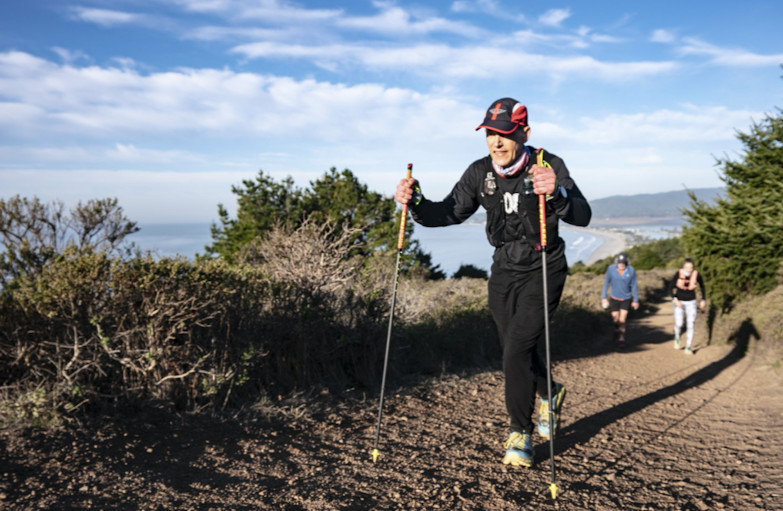
Yet, on record, only one person has ever completed the fabled Quad Quad Dipsea, which is 16 crossings of the trail (eight out and backs) for 113 miles and nearly 38,000 feet of elevation—8,000 feet more than the height of Mount Everest. That person was Don Lundell in 2003. Few have attempted the unofficial race since—until December, when Bradley Fenner became the second runner ever to complete the 16 crossings.
It was an idea sparked by Tony Marshall, a runner from the area. In the absence of races because of the pandemic, Marshall convinced Fenner, his friend and fellow area runner, to take on the challenge on the weekend that Quad Dipsea normally takes place.
Fenner, 56, knew the course well; he’s completed the Quad race 11 times since 2008 and runs on the trail frequently, since he lives nearby. But initially, he wasn’t keen on the idea, feeling nervous about the distance and elevation. Still, he began training and after a solid performance doing a Double Quad (eight out and backs) in mid-October, he decided to get on board.
“Over the years, when I would train with my friends for the Quad Dipsea, we jokingly made reference about doing the Quad Quad, but it never gained a lot of traction,” Fenner told Runner’s World. “I was incredibly and candidly intimidated by the statistics of it. I had never run quite that far. I’d done 100 milers. This was a bit further and involved 36,000 feet of elevation. I was intrigued by it. I was also intimidated by it.”

At 5 a.m. on December 4, Fenner and Marshall ascended the 670 stairs from Mill Valley for the first time, beginning what would be a long adventure lasting more than 30 hours. The duo had a two-person crew, Zak Sterling and Jim Lynch, stationed in Mill Valley and a lone parked car near the trail head in Stinson Beach with supplies if needed.
After about 43 miles, or five out-and-backs, Marshall called it a day because of a stomach issue, leaving Fenner to go the rest of the way on his own. To stay mentally strong, Fenner broke down the race into sections to be completed—eight out and backs was more digestible than 113 miles.
Luckily, he also lined up runners from the community like Charlie Ehm, Gary Wang, Olivia Amber, Jon de St. Paer, Corrine Malcolm, Ezra Becker, Devon Yanko, Louis Secreto, Hal Rosenberg, Greg Nacco, and Geoff Vaughan to crew and pace him over those tough stretches.
One of his biggest challenges was the lack of daylight hours of the winter. He started in the dark and only had, at most, 10 hours of light before night set in on the first day. It would be a long 14 hours at night, using his own lighting gear and his Hoka Evo Mafate 2s to tackle the difficult terrain.
“The downhills in the darkness were hard,” Fenner said. “The moon wasn’t close to full, so there wasn’t light from that. It was treacherous in the pitch black.”
Fenner simply kept to his routine. He did not sit down at any point for fear of the chair absorbing him. He hiked the uphills and jogged the downhills. He stuck to solid foods like egg sandwiches, turkey sandwiches, Coke, Ensure, cheese pizza, and cheese quesadillas, rather than things like gels or sports drinks he thought he’d get tired of over 30 hours.
After 31 hours, he had reached the final out and back of the trail. His quads and calves burned after over 30,000 feet of elevation, but he climbed the stairs one last time. Over the peak he went and back down leaving one more crossing to go.
“I was nervous and not taking anything for granted,” Fenner said. “There are portions of the trail that are so gosh-darn technical. You can role your ankle at any point. I just focused on where I was until the final mile where I finally thought I was going to finish. But I was kind of nervous that disaster could strike pretty much any time.”
As Fenner descended the stairs, he was greeted by the small crowd of his crew and friends who showered him with cheers and champagne. Fenner wasn’t a big fan of the latter after 113 miles, but he said he “was too tired to object and just let them pour it on me because I wasn’t sure if I could do anything.”
He quickly found a chair, finally sitting after 34 hours, 15 minute, and 35 seconds. A friend handed him a Fort Point Villager IPA and someone else brought him In-N-Out Burger. He called Quad Dipsea creator Tropical John Medinger, who congratulated him over FaceTime. 

Afterwards, he felt sore but not horribly so. He did feel a surprising amount of fatigue in for 10 to 14 days after, which he credits to the long, overnight effort throwing off his internal clock. A month out, he is back to full strength and he is proud of his accomplishment.
“I would ask that, whatever you write, please don’t use the word legend,” Fenner said. “I’m better than middle of the pack, but I’m not elite. I set a goal, I worked toward it, and I had a good day with phenomenal support. I’m not a legend. I’m not Rob Krar. I’m just a normal guy who loves the sport. I will say it was the most significant run that I have ever done, so I will at least say that.”
by Runner’s World
Login to leave a comment
What is going to happen to road racing as we know it? Bob Anderson thoughts on the situation. Could it be the end of big races?
The COVID-19 virus is deadly. Already (as of May 17) at least 317,000 people worldwide have died from the virus. This number is still growing by thousands each day. By the end of this week most likely over 100,000 people in the US will have died from the Coronvirus (COVID-19).
Some people think this number has been inflated. Others think it is low. It is hard to really know the true facts. In any case thousands of people have died from this new virus. That's a fact.
Some still feel this virus is no worse than the common flu. Many of these ill informed people might be some of the ones who are continuing to spread the Cornavirus. Many of these people don't wear face masks while in public nor practice social distancing. These types of people could easily be those that end up infecting others. And kill racing too. More on this later.
Doctors are saying this virus is much more contagious than the common flu and the death rate particularly for people aged 60 plus is high. Much higher than the common flu.
This information is talked about daily in the news and there is no need to further exam that here. The focus here is road racing and what impact this crisis is going to have on the sport.
The My Best Runs (MBR) website only features and follow the best, most interesting and unique races in the world. The site is currently following 837 races from all over the world.
One thing the website does is list the leaderboard results from the races featured. The top four men and women and then age-group winners in ten year age-groups starting at age 40 are posted. Stats are complied and compared among the races. Nearly 90,000 unique people visited the site in February to look for races, follow races or read Running News Daily. The traffic had doubled in a year. That's over one million annually. The growth of the site illustrates how road racing around the world was growing.
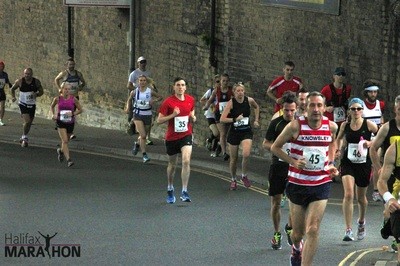
Everything was set for a banner year. The Boston Marathon had lined up another amazing field for their annual races that has been held every year since 1896 on Patriots Day. The London marathon had confirmed that the world's top two marathoners would battle it out on the streets of London. Maybe the first sub two hour marathon in a real race was going to happen? However both races were postponed and they hope to have races this fall. Some feel that is not going to happen.
It was in early February when people began talking about the Cornavirus. A virus started in China. But mostly people did not seem overly concerned.
The month before (January 26) the Ujena Fit Club (UFC) Training Camp in Thika Kenya was opened. The camp was not totally finished but the core group of runners had been selected, a time trial was staged and a traditional goat feed blessed the opening. A couple hundred people showed up for the affair.
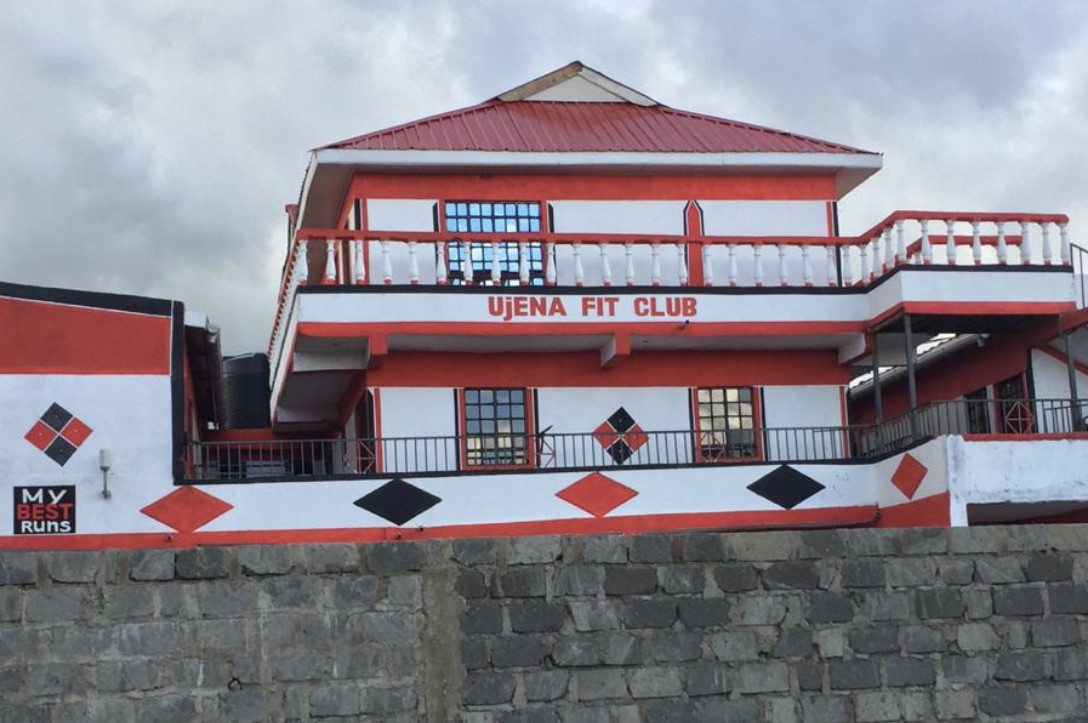
A third floor of the club would be added in the following months to house guests interested in training with elite Kenyan runners. The official grand opening was set for the end of May with a Double Road Race 15k race planned the same weekend. Sponsored were being lined up for a world record attempt.
The top runner in the club and part owner is Joel Maina Mwangi. For the last couple of years prior he would travel to Italy in the spring and bring back enough prize money to take care of him and his family for the rest of the year.
2020 was going to be his best year yet. Joel was in top form being trained at his UFC Training Camp by coach Dennis. His teammates pushed Joel in three-a-day workouts to higher limits.
Joel left for Italy in early February right after the UFC Training Camp US partners Bob and Catherine Anderson had left after attending the opening.
Joel's first race was in Verona, Italy Feb 16. He won that race and clocked 1:00:40 for the half marathon, a personal best. His plan was to race each weekend after that and then run the Rome Half Marathon set for March 8. This point to point course is fast. Galen Rupp had won there a couple of years back breaking an hour in the process. Joel's plan was to win, break an hour for the first time and bring home the big prize purse.
This didn't happen as Italy started closing down their country to battle COVID-19. It was going out of control. Joel luckily left Italy March 7th for his home in Thika, Kenya while he could still travel. But not with the over $20k(US) he was planning on bringing back home with him.
The world was shutting down. Whole countries were locking down. The last race featured by MBR to take place was the LA Marathon March 8 along with several others held that same weekend. There has not been a significant race held any place in the world since March 8. California ordered everyone to Shelter in Place starting March 17. Other states and countries followed.
Every race scheduled for April or May and featured on the MBR website were either canceled or postponed. Most races also in June and July have been canceled or postponed as well. The Tokyo Olympics were postponed for a year. The Berlin marathon in September was canceled (but they are trying to workout a new date), Western States 100, the Camrades Marathon, the Dipsea, and so many other well established races were cancelled.
Pippa Stevens a CNBC writer posted, "As running has grown in popularity, local clubs have popped up around the country, and there are now roughly 35,000 races each year in the U.S. alone, data from industry trade group Running USA shows.
"More than 44 million people in the U.S. identify as a runner, and 17.6 million people crossed the finish line in U.S. races in 2019.
"With all races cancelled for the time being, billions of dollars are at stake. The biggest marathons – from Boston to Chicago to London to Tokyo – inject hundreds of millions of dollars into local economies. The most recent analysis of the TCS New York City Marathon, for example, found that the race’s economic impact topped $400 million."
A lot is at stake. But race directors need to know that even if cities allow them to hold their races, not everyone will automatically be there on the starting line.
Dan Anderson wrote, "I am having a major motivational problem with my running! For the first time in my running career (almost 55 years) I have no races to train for. I really miss them. But I will not run in a race until a vaccine is available. Being 68 years old with several preexisting risk factors it is too dangerous! Hopefully within a year a vaccine will be available. Until then I will push myself to get out and run."
Racing is addictive and so many people around the world love it. Once things are figured out and it is safe again many will be there on the starting line.
Sam Tada who lives in Japan wrote, "Racing helped me so many times in my life and I miss it.
"Racing gives us opportunity of challenge, growth, and communication. It makes us happy and healthy mentally and physically. I love racing and miss it.
"We are facing difficult time right now but once this health concern is gone I think we will be able to enjoy racing more since we understand how racing is important for us.
"I am looking forward to racing again and I am trying to do my best effort to stop the spread of this virus."
There are a lot of things that will need to be addressed. Here are some ideas I have. Maybe at least for awhile or forever all runners will need to show up wearing a Face Mask.
Then they walk into a screening booth and have their temperature checked. If they pass, they walk into another booth were they are sprayed with a solution (totally safe) that would kill any viruses they may have on their clothing, shoes or body. At this point they are still wearing their face mask. And they continue to wear their face mask until about a quarter mile out or until there is spacing between them and others. Once they finish they put back on their Face Mask until they are back in their car.
Of course everyone would have to sign a Waiver saying that if they contract COVID-19 at the race and if they die later their family could not sue the race or city. No idea how porta potties, water stops or handing out medals at the end could work out other than eliminating them.
I see two problems with these ideas. Remember those people that are already not following the rules? Do you think they would show up at a race wearing a Face Mask? And we also know that signing a waiver does not restrict a family from sueing everyone if a member of their family dies from COVID-19 which they determined they got at a race. Even before this crisis a husband ran a half marathon in San Francisco and died at the finish line. He had signed a waiver but his wife sued everyone and won lots of money. The race Director got out of the business (sadly) yet he did nothing wrong from the inside information I know.
There is not a clear answer about the future of road racing. No matter how careful race directors, cities and charities (because they are big losers too) work together it would only take a few jerks to ruin it all.
So what race is going to be the first one back? Any day now the Old Dominion 100 Miler set for June 8th will be making a decision. They posted on their website, "The Old Dominion Run is still working all options in an attempt to have the run this year.
"We are working with numerous authorities in our area to assist in providing a good and safe race day experience for everyone involved. The governor of Virginia has gone to phase one in our area and our authorities are reviewing our plan vs the restrictions.
"Currently, part of our proposal has had to include a limit on our field to 50% for any hopes for us to proceed. We currently have 55 entrants and will not immediately be taking more from the wait list.
"Responses from the authorities will be a major part of our decision on 17 May. If the race proceeds, entries will not be more than 55. The waitlist will remain active," posted by Ray, Wynne and Race Management.
On June 20th the Shelter Island 10k (first photo) is scheduled to take place in Shelter Island New York. It is a big race and there are always fast winning times. We have contacted the race director and have not gotten a comment from them. There is no mention on their website about COVID-19. We are assuming they are trying to make it happen but what is their plan?
A couple of other races in late June are also trying to figure something out. Like the Halifax Marathon (second photo) has not torn in the towel just yet but are closely monitoring the situation as noted on their website.
Another one of the 837 races being followed by MBR wrote, "Our race was cancelled for this year, fingered crossed we will be back in 2021, april 17th.
"Our race of 2500 might look a bit different in 2021, 10 wave starts of 250 each? Each 10, 15 to 20 minutes apart? Lots of questions like what will aid stations look like and function? Maybe results may go to chip times, or no awards at all? Things will be different.
"The big question now is how we will all deal with the city, county and state mandates and permits. In the past, permits were a pretty easy process, no mass gatherings limitations.
"Locally I believe we will have some small events, mostly if not all on our trail system which limits events to 200 participants. A couple are still moving forward with fall dates, hopefully they will happen. Currently we have a limit for runs set by our city, set at 250 runners with wave starts, with really no other details. In the past road events have had much bigger fields. Going forward if the social distancing stays part of the rules it will be very hard to stage a very large running event.
"Events may look like some ultrarunning events, with very little or no finish line parties, just finish, quick drink and maybe food and head home.
"Runners and organizations will adapt to the rules and events will happen," wrote Brian at Race to Robie Creek.
Hopefully the game changer is going to be that a vaccine is created and COVID-19 is wiped off the face of the earth. Just as long as everyone gets vaccinated and don't continue to think that COVID-19 is no worse than the common flu. This could solve most everything as long as cities who issue permits think it is enough.
It sure would be nice to get back to things as they were. Or at least close to it. But many of us will continue to wash our hands more often, wear a face masks at times and not go out if they are not feeling well. Road racing is just too important to so many people.
by Bob Anderson
Login to leave a comment
Old Dominion 100 Mile
The Old Dominion 100 Mile Endurance Run is more than just a race. It is more than just four marathons run back to back. It is more than an event in the yearly schedule. It is the Old Dominion. What does that mean? The Old Dominion stands for tradition - the tradition of each individual against a difficult course, hot...
more...Kara Goucher is officially now an ultrarunner
Kara Goucher took a podium spot yesterday at her first 50K at The North Face Endurance Challenge Championships
Olympic marathon runner Kara Goucher has joined the ultramarathon club. On Saturday November 16, the former Nike athlete raced to an impressive third place finish at The North Face Endurance Challenge Championships 50K race in San Francisco in a time of 5:30:57. Goucher has found a new love and appreciation for the trails, especially in the wake of the suspension and allegations of abuse against Nike and her former coach, Alberto Salazar.
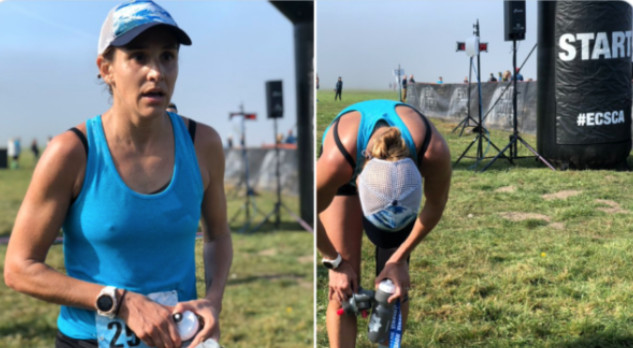
Goucher raced her first trail race back in August at the Leadville Trail Marathon, and has been moving up in distance ever since. The North Face 50K race gains 2,053 metres running through the Marin Headlands in the San Francisco Bay area. Goucher challenged her physical and mental toughness through Tennessee Valley, Muir Beach, and Pantoll Station, descending on the famous Dipsea trail. After crossing the Golden Gate Bridge, she finished the race enthralled and exhausted at Crissy Field.
Goucher shared the podium with Corinne Shalvoy in first place with a time of 5:00:10 and Jenny Comiskey in second with a time of 5:15:12. Nicholas Handel won the men’s 50K race in 3:58:11, Brian Gillis was second in 4:11:45, and Justin Grunewald was third in 4:15:39.
Login to leave a comment
Age-group superstar 62-year-old Brian Pilcher wins the Dipsea for the fourth time.
Kentfield, California's Brian Pilcher, competing in the Dipsea Race for the first time since winning his third race in 2016, crossed the finish line in Stinson Beach first on Sunday morning to claim his fourth career victory.
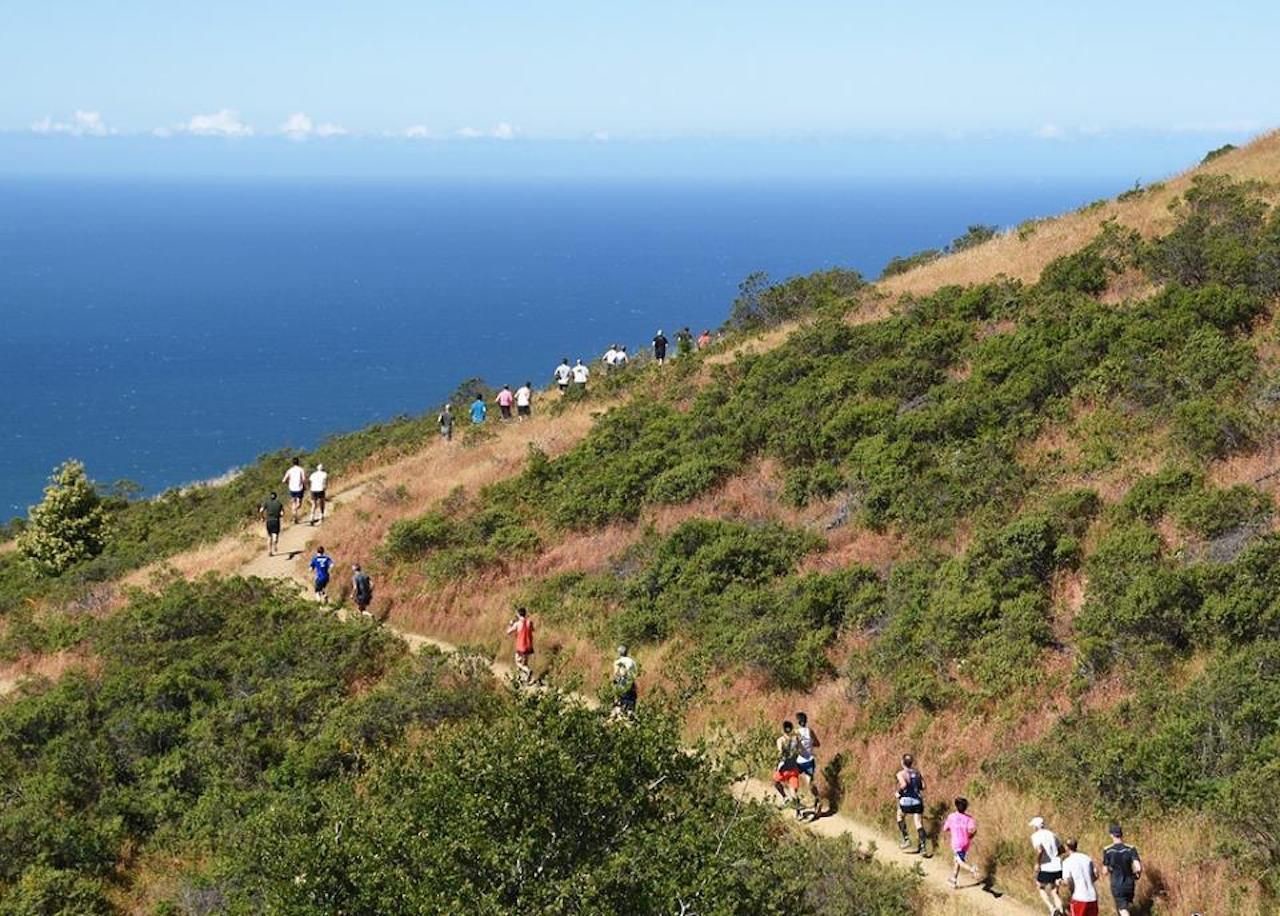
Colorado’s Mark Tatum (age 59) finished second with San Rafael’s Alex Varner (33) and Sausalito’s Chris Lundy (48) — the two-time defending champion –finishing third and fourth, respectively.
With his 4th win, 62-year old Brian Pilcher ties Shirley Matson for 2nd most wins in history (after Sal Vasquez with seven wins).
Sausalito’s Chris Lundy, 48, who began with a two-minute penalty after winning the last two Dipseas, said afterwards.
“I had a good race today,” Lundy said. “It was a little bit slower than last year, but I felt really good and ran as fast as I could. I like the heat, but it still slows you down a little bit.”
Corte Madera’s Clara Peterson, 35, who finished 10th last year, rounded out the top five. Peterson also earned the award for best woman’s time, and two of her four children walked to the stage to accept her two trophies.
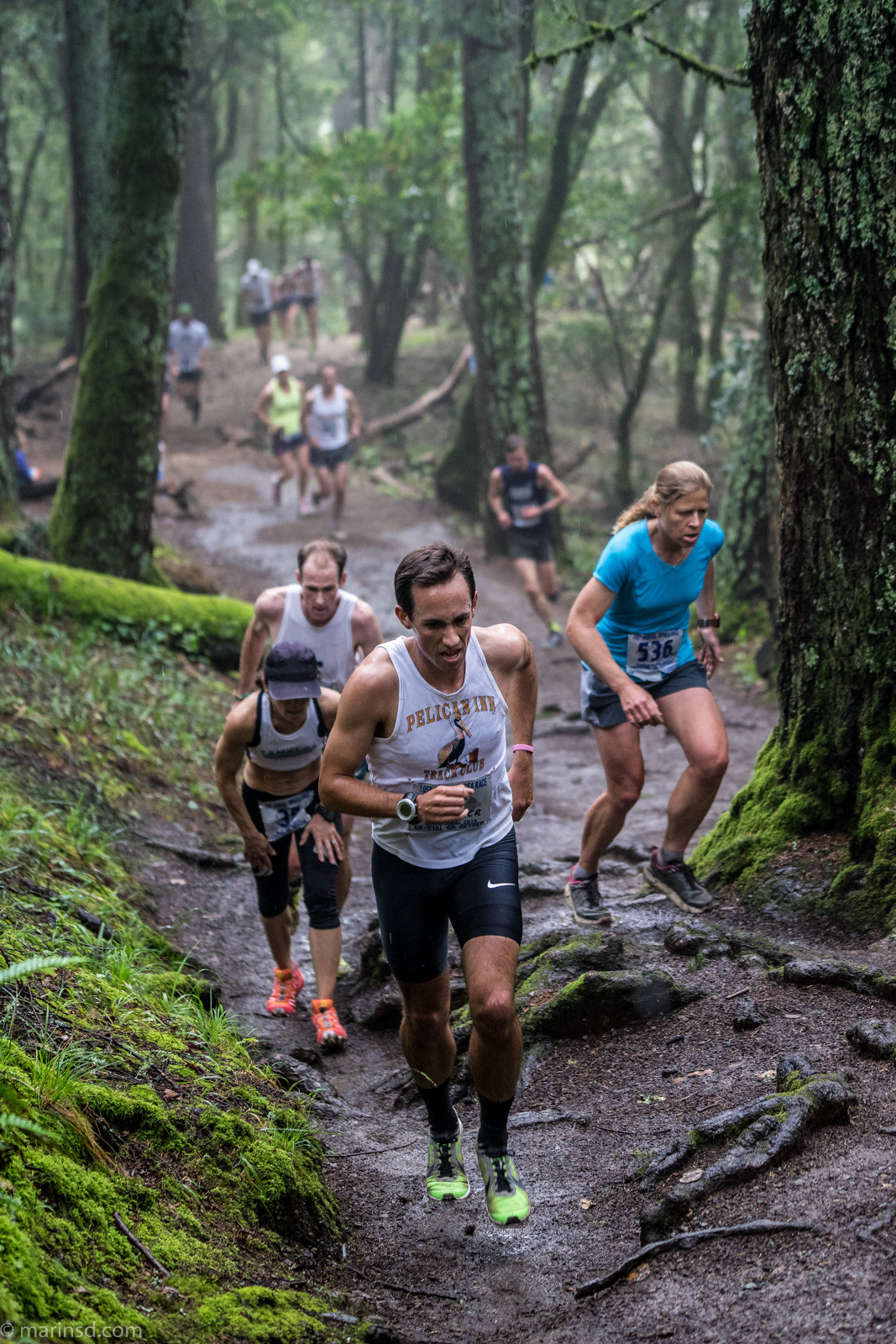
Brisbane’s Cliff Lentz, 54, Novato’s Dominic Vogl, 32, Montrose, Colo., resident Heath Hibbard, 66, Larkspur’s Diana Fitzpatrick, 61, and San Rafael’s Wayne Best, 51, placed 6-10, respectively.
The Dipsea was first run in 1905 and is considered to be the oldest trail race in America. It is run every year on the second Sunday in June.
The scenic 7.4 mile course from Mill Valley, California to Stinson Beach is also considered to be one of the most beautiful courses in the world.
The stairs and steep trails make it a grueling and treacherous race. And its unique handicapping system has made winners of men and women of all ages. Because of its beauty and challenge, it is a very popular event, and because of safety and environmental concerns the number of runners is limited to about 1,500.
While racers enter from all over the world, the Dipsea is primarily a Northern California event and the entry process is tilted slightly to favor local contestants.
Login to leave a comment
The Dipsea Race
First run in 1905, the Dipsea is the oldest trail race in America. It is run every year on the second Sunday in June. The scenic 7.4 mile course from Mill Valley to Stinson Beach is considered to be one of the most beautiful courses in the world. The stairs and steep trails make it a grueling and treacherous race....
more...Refugee immigrant Hop Le and his 18-year-old son, Alex, are set to run the Dipsea this weekend
Hop Le, who serves as chief of the plastic surgery department at the Kaiser Permanente San Rafael Medical Center, is running in the 109th annual Dipsea Race with his son, Alex, on Sunday for the first time.
Competing in the Dipsea — a 7.4-mile trail footrace, from Mill Valley to Stinson Beach, handicapped by age, gender and previous performances — may not evoke a sense of freedom to most of its participants, but for Le, who has been running both by choice and involuntarily his entire life, that is exactly what it represents.
“For a refugee immigrant to run just for fun instead of away from danger or as a means of transportation is to truly be an American,” he said.

Le, 49, a Greenbrae, California resident, attended Yale University for undergrad and University of California at San Francisco for medical school. He has climbed the ladder at Kaiser during the past 13 years. He prides himself on always choosing the toughest path, a mindset he implores his children to adopt.
Le was born in Saigon in 1969, during the Vietnam War, to a family heavily involved in the war, specifically his father and uncle. He was taught from a young age to stop what he was doing and run as fast as he could when sirens blared, electricity was lost and the thunderous sound of bombs filled the air.
“Parents try to shelter their kids from the ravages of war,” Le said. “They would rush you into the basement until it passed. It became part of my life as a kid, just like going to school. You didn’t know why you had to do it, but it’s what you did.”
When the Vietnamese government collapsed, Le’s family became targets because of their military ties.
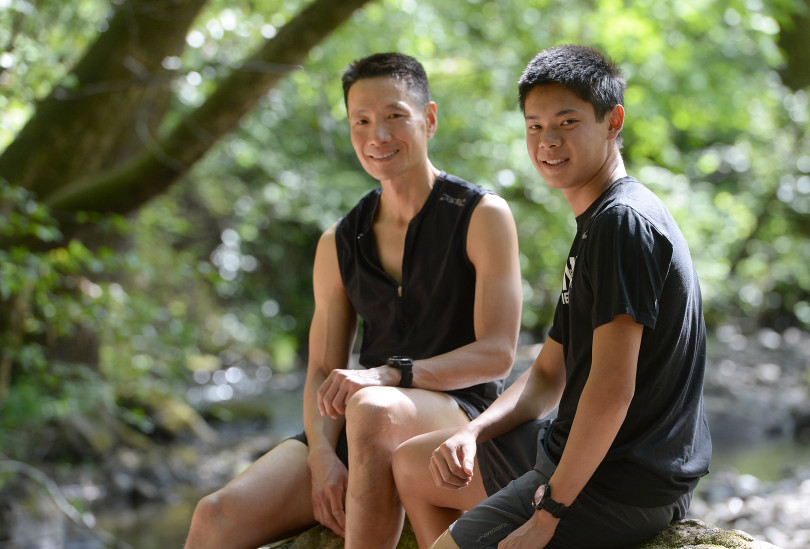
American soldiers in Vietnam were faced with a dilemma: obey the White House’s orders to evacuate only U.S. citizens or risk treason and save the lives of South Vietnamese citizens attempting to flee from the North Vietnamese Army.
The family was smuggled by Marines — against the ambassador’s orders — into the seatless belly of a U.S. military cargo plane as the runway was being bombed.
“It was just meant to carry tanks and jeeps,” said Le, who was 5 years old at the time and vividly remembers the day. “Hundreds of us were herded onto the plane. It was very traumatic.
“When they close that hatch, it’s essentially like you’re being buried alive.”
Login to leave a comment
The Dipsea Race
First run in 1905, the Dipsea is the oldest trail race in America. It is run every year on the second Sunday in June. The scenic 7.4 mile course from Mill Valley to Stinson Beach is considered to be one of the most beautiful courses in the world. The stairs and steep trails make it a grueling and treacherous race....
more...Returning champ Chris Lundy hopes to become only the second person to win three Dipsea Races in a row
Two years ago, the narrative surrounding Sausalito’s Chris Lundy was that she was the best female runner who had yet to break through and win the Dipsea.
On Sunday, Lundy enters the 109th Dipsea Race with a chance to become only the second person to win three in a row. The question about her has changed from ‘When will she win?’ to ‘How many will she win?’
“After winning it the first year, you’re no longer in that zone of just trying to get to get the win,” Lundy said. “Then it becomes ‘What’s the next challenge?’ The next challenge was to try to win it again and that happened. I don’t think it’s looking super likely to win it a third time in a row but I’m certainly going to try.”
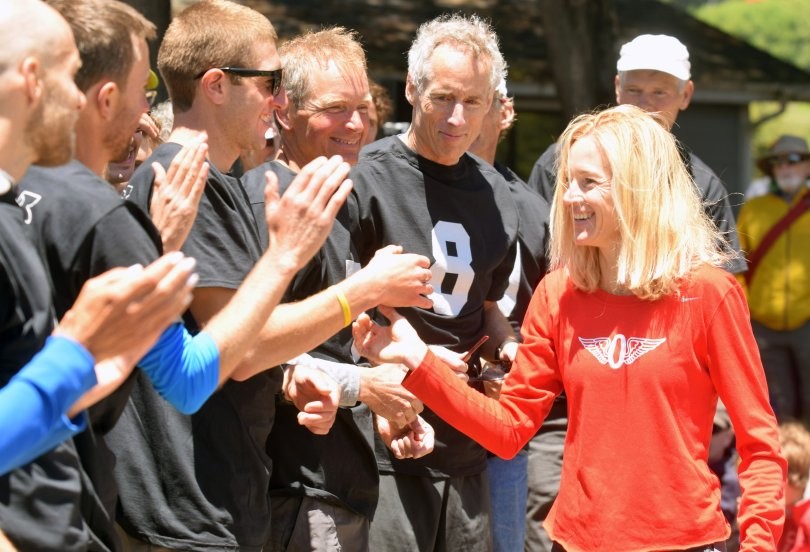
Only four women have ever won back-to-back Dipseas — Lundy, Diana Fitzpatrick (2013-4), Shirley Matson (2000-1) and Megan McGowan (1991-2). Only one person has won three in a row. Sal Vasquez won four consecutive Dipseas in the 1980s.
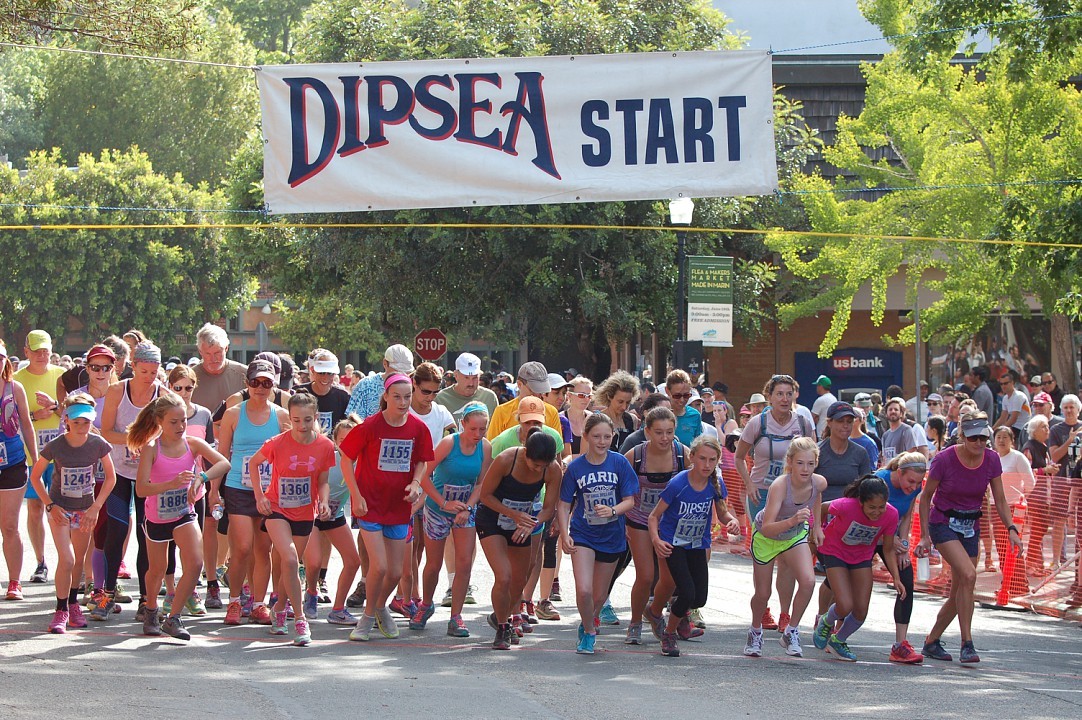
Although three people have won back-to-back Dipseas this decade — Lundy, Brian Pilcher and Fitzpatrick — the race is set up to prevent anyone from going on an extended run of success, literally punishing anyone who does.
As a two-time defending champion, Lundy will be penalized an additional two minutes in the age-handicapped race from Mill Valley to Stinson Beach. Normally her age, 48, would grant her 12 headstart minutes but she’ll only receive 10.
“Obviously the penalty minutes definitely come into play,” Lundy said. “Every year you get a little bit older. You hopefully stay just as fast but it becomes more of a challenge to keep the same speed. Other people around you might move up in age groups at different times. Every year you just have to re-evaluate who is starting in each group.
“You pretty much just get as fit as you can and see how it goes that day.”
Fitness isn’t an issue for Lundy heading into the race this year — she has no injuries to report after winning her first Dipsea two years ago despite tearing her ACL down the stretch of that race. She repeated as champion last year while coming off rehabbing that same injury.
Login to leave a comment
The Dipsea Race
First run in 1905, the Dipsea is the oldest trail race in America. It is run every year on the second Sunday in June. The scenic 7.4 mile course from Mill Valley to Stinson Beach is considered to be one of the most beautiful courses in the world. The stairs and steep trails make it a grueling and treacherous race....
more...47-year-old Chris Lundy wins the Dipsea Race for the second time in a row
Login to leave a comment
Ashley Moffet loves running up the stairs and through the redwoods at the oldest trail race in America, the Dipsea
Login to leave a comment
80-year-old Russ Kiernan Running the Dipsea for the 49th time
by Barry Spitz
Login to leave a comment
Mary Etta Boitano's Mother smashed the world 5K record for 94-year-olds
by Mary Etta Boitano Blanchard
Login to leave a comment
The Dipsea is the oldest Trail Race in America
Login to leave a comment


